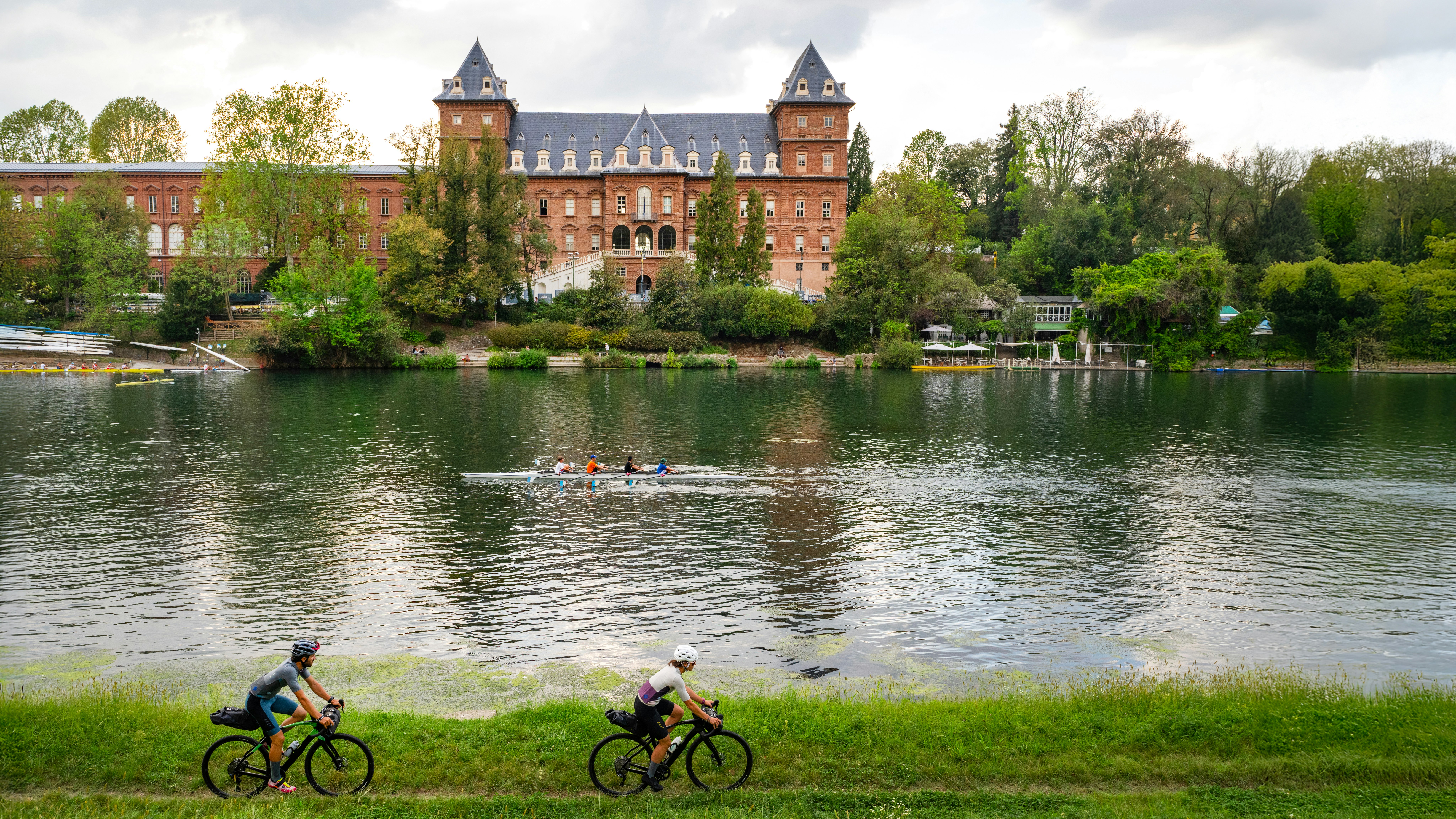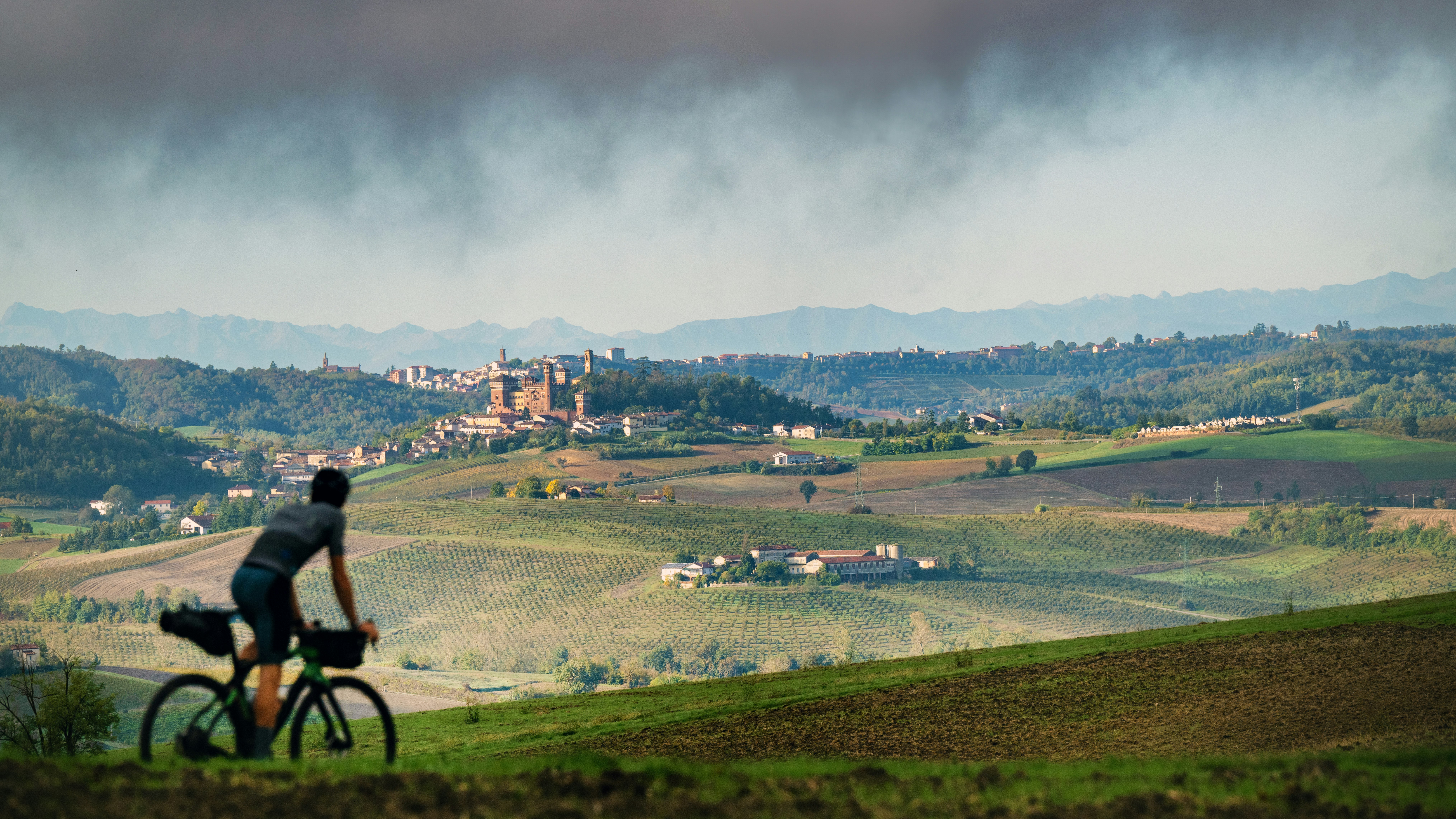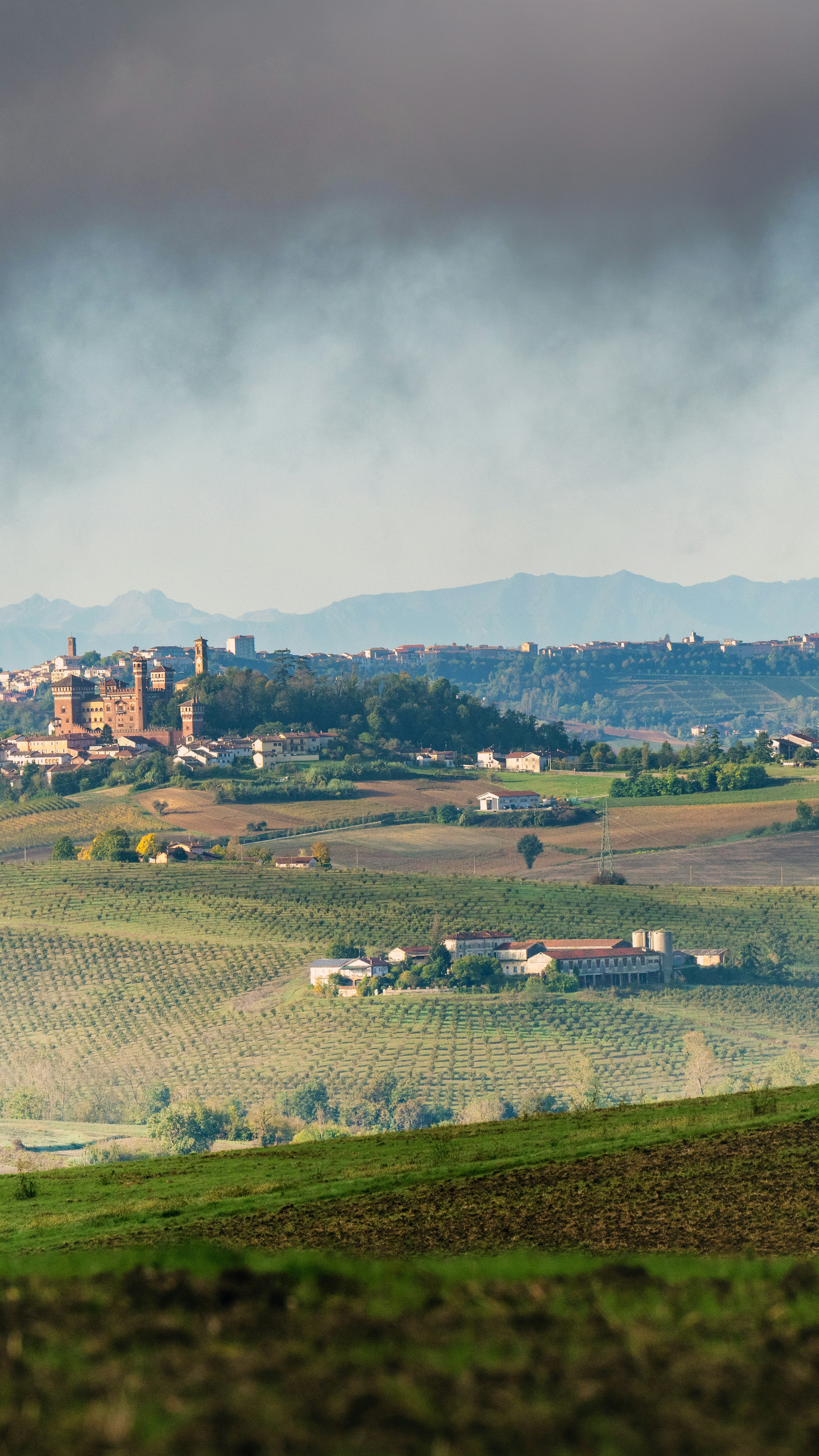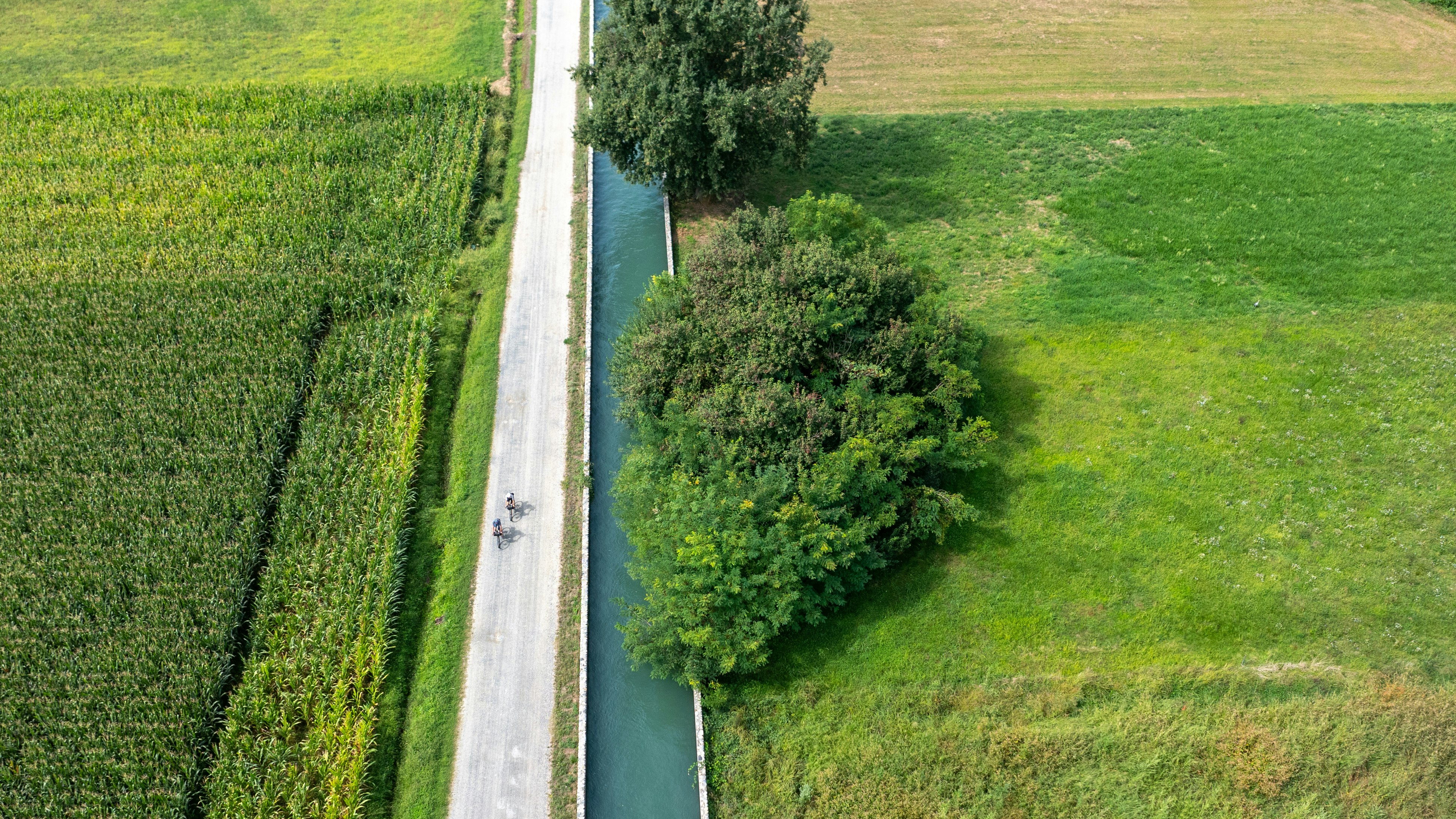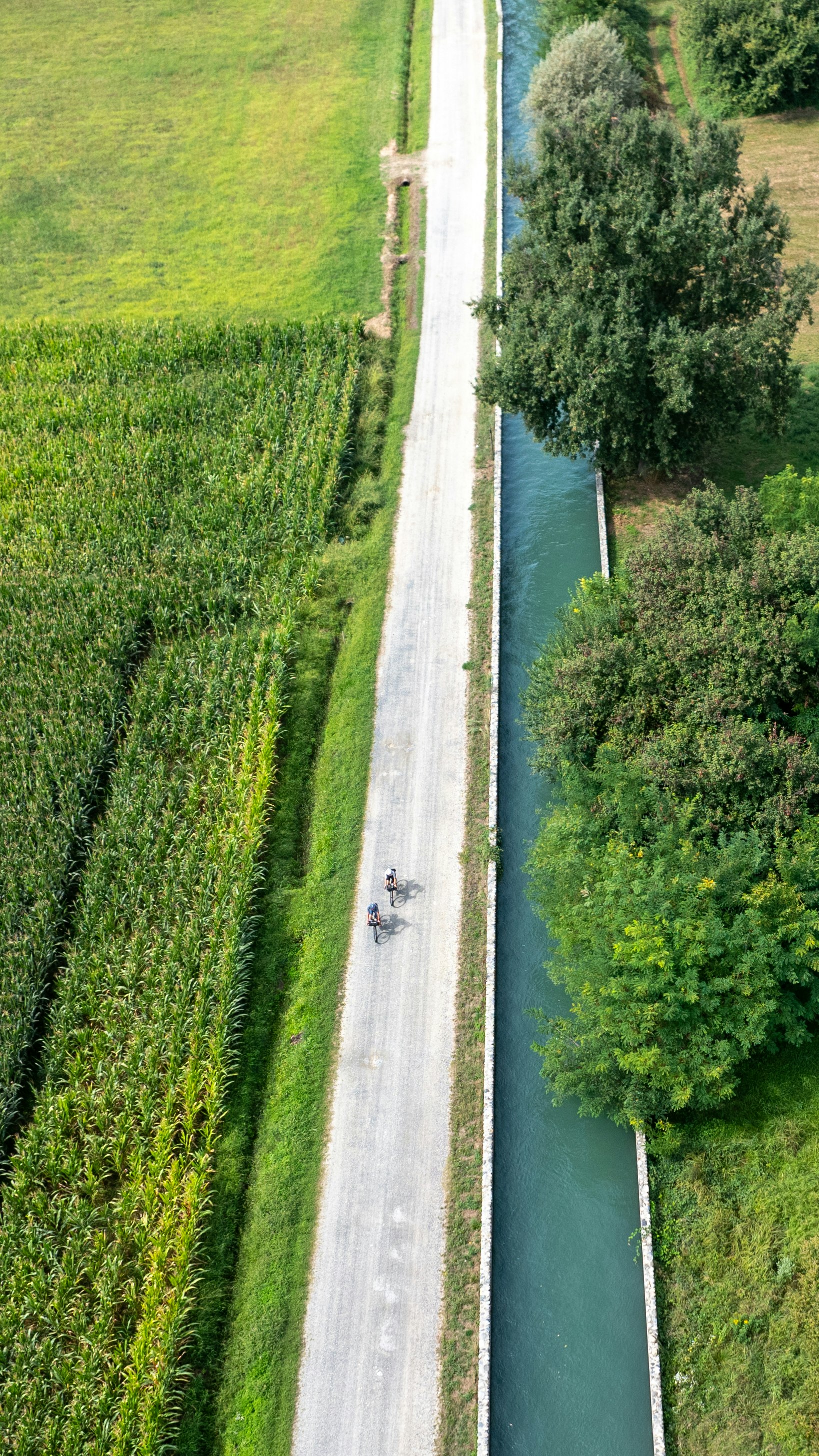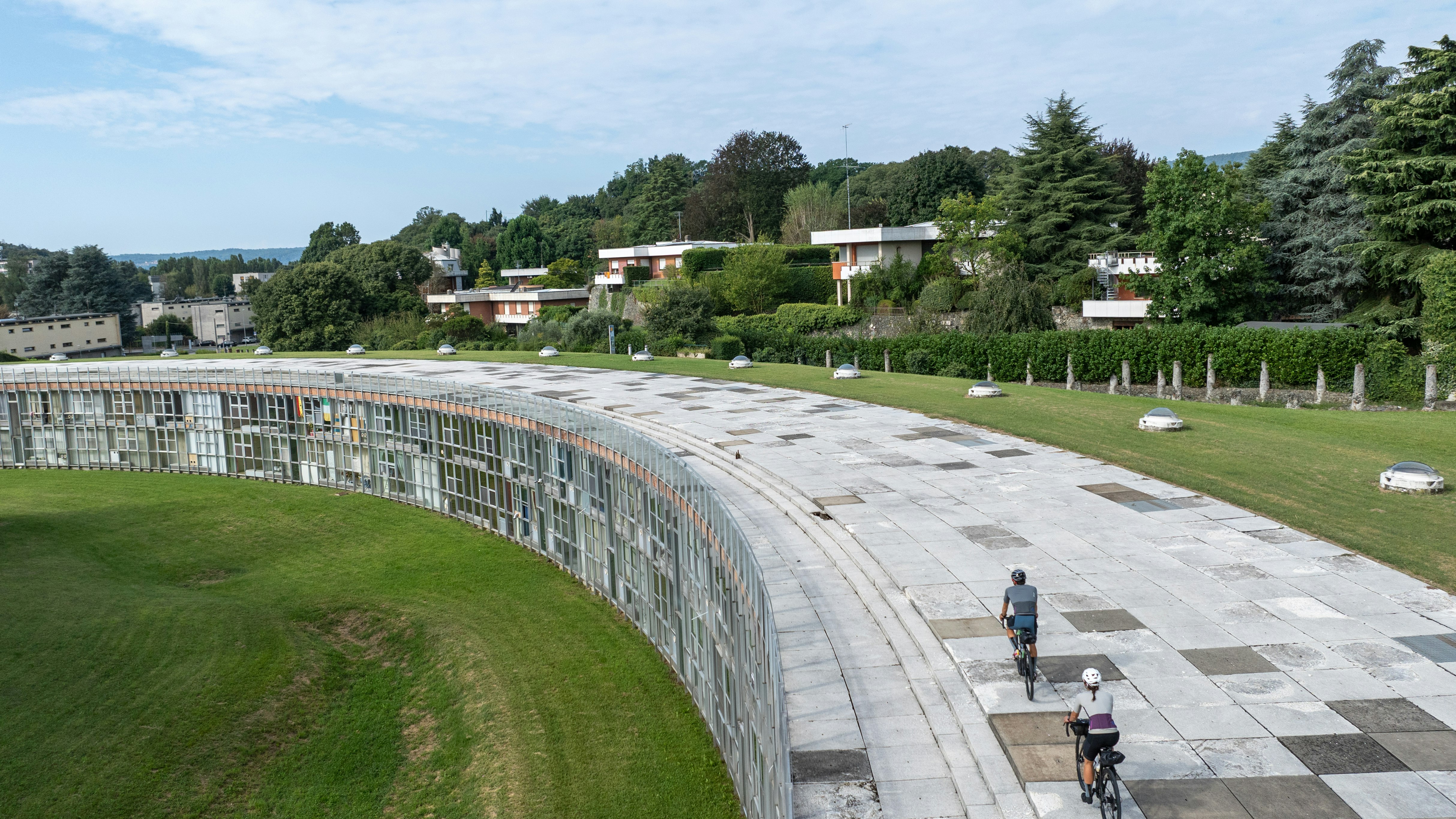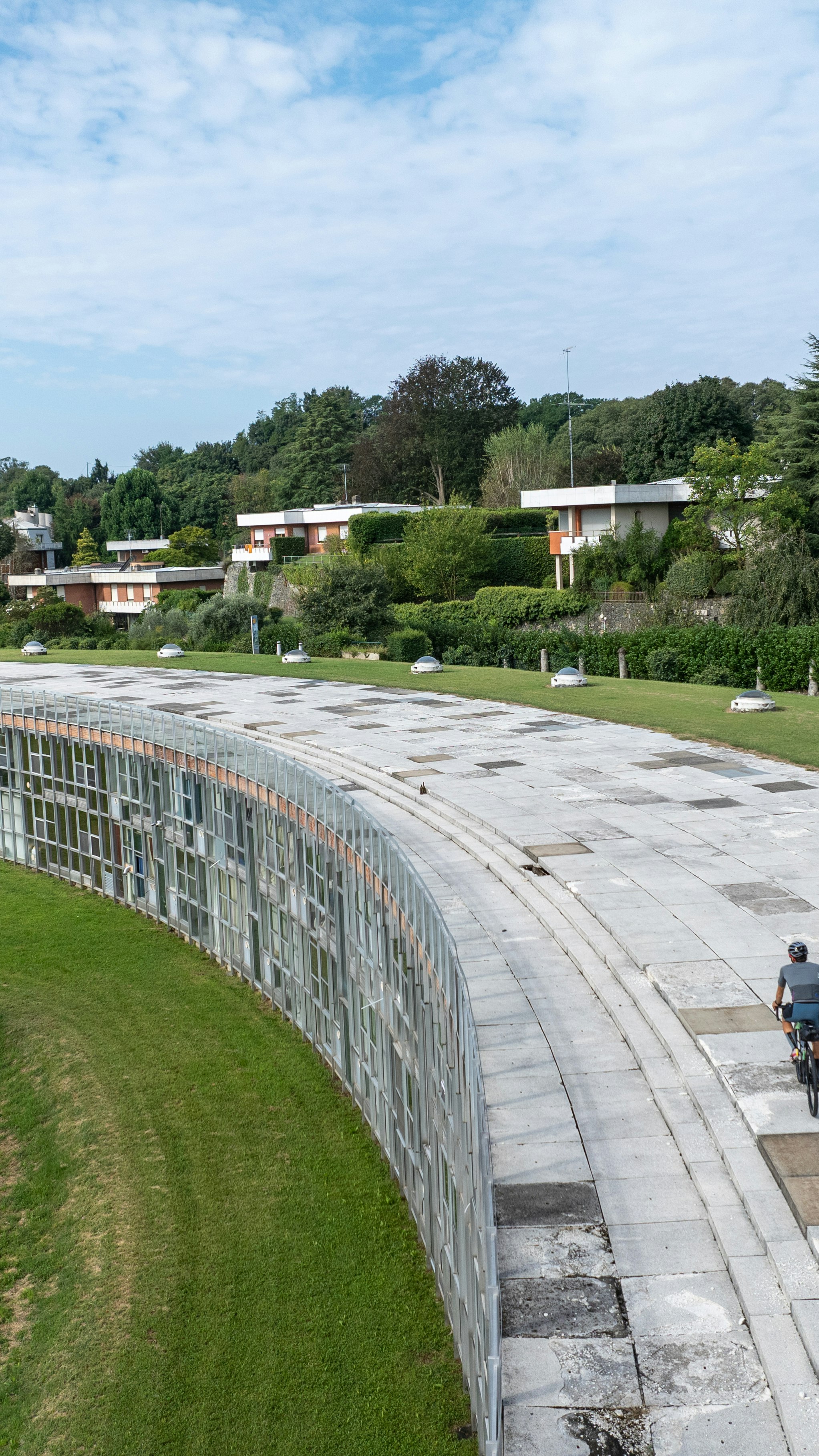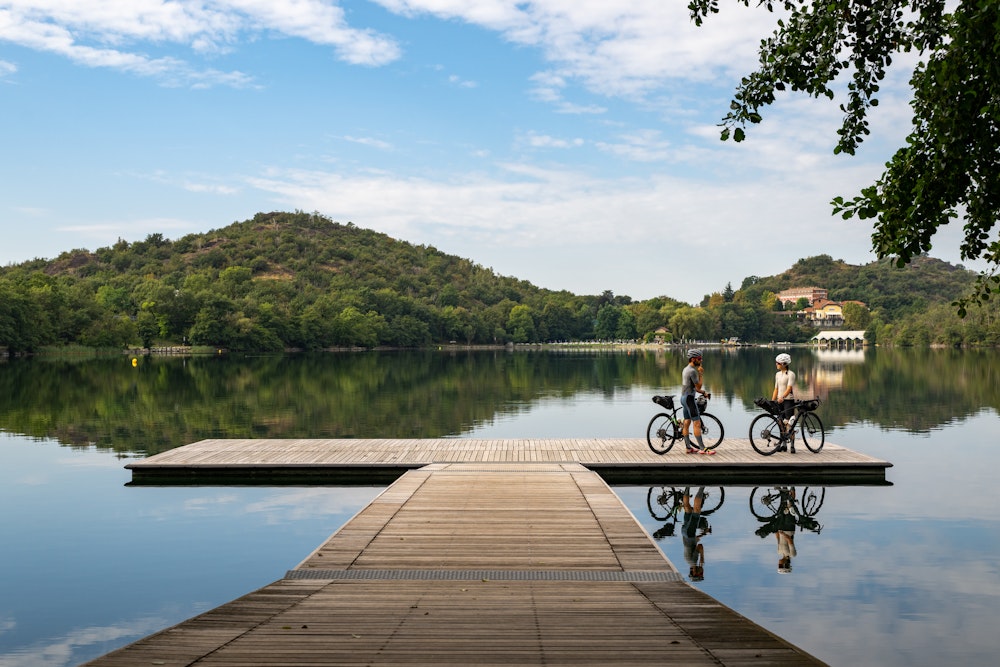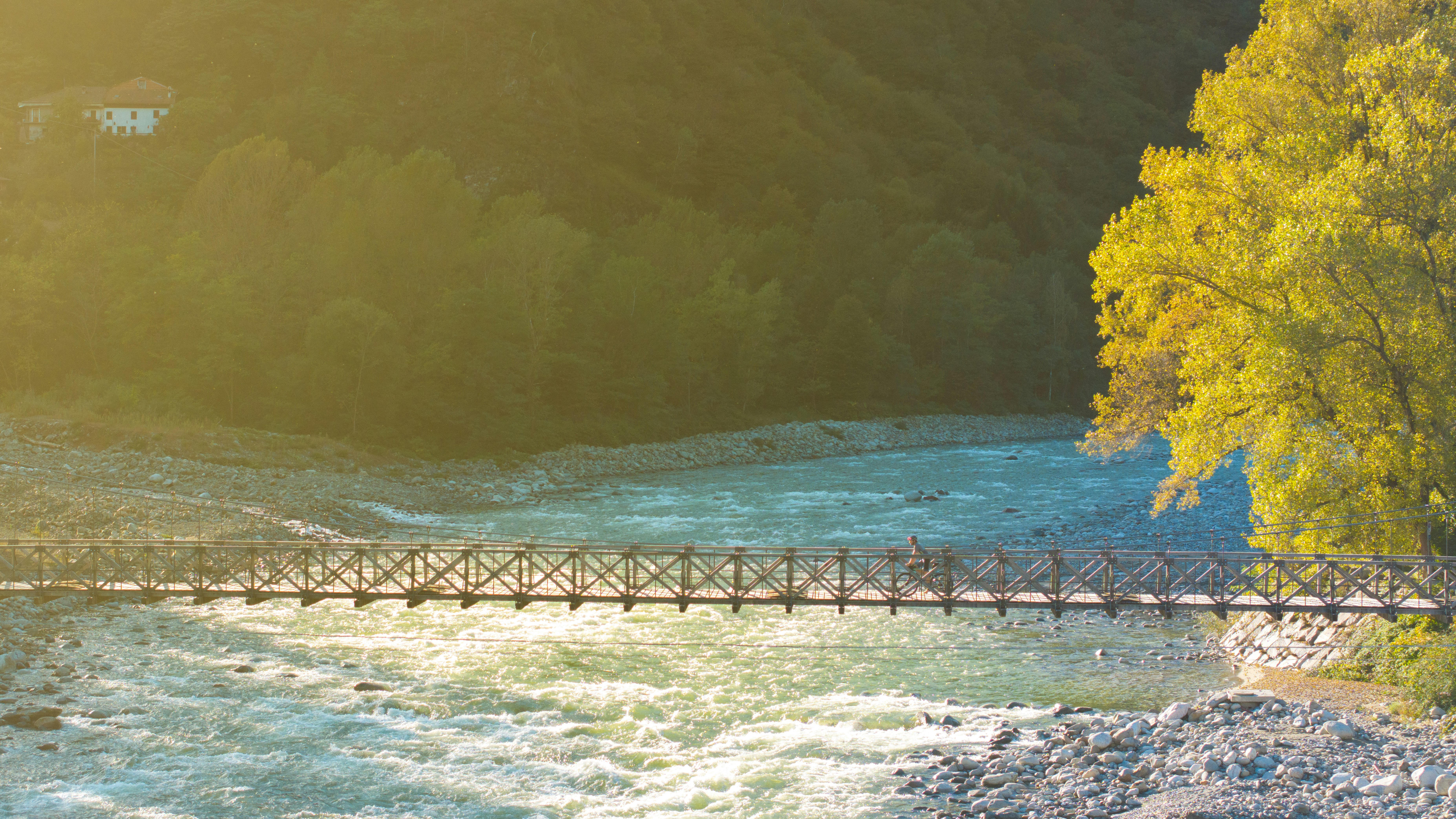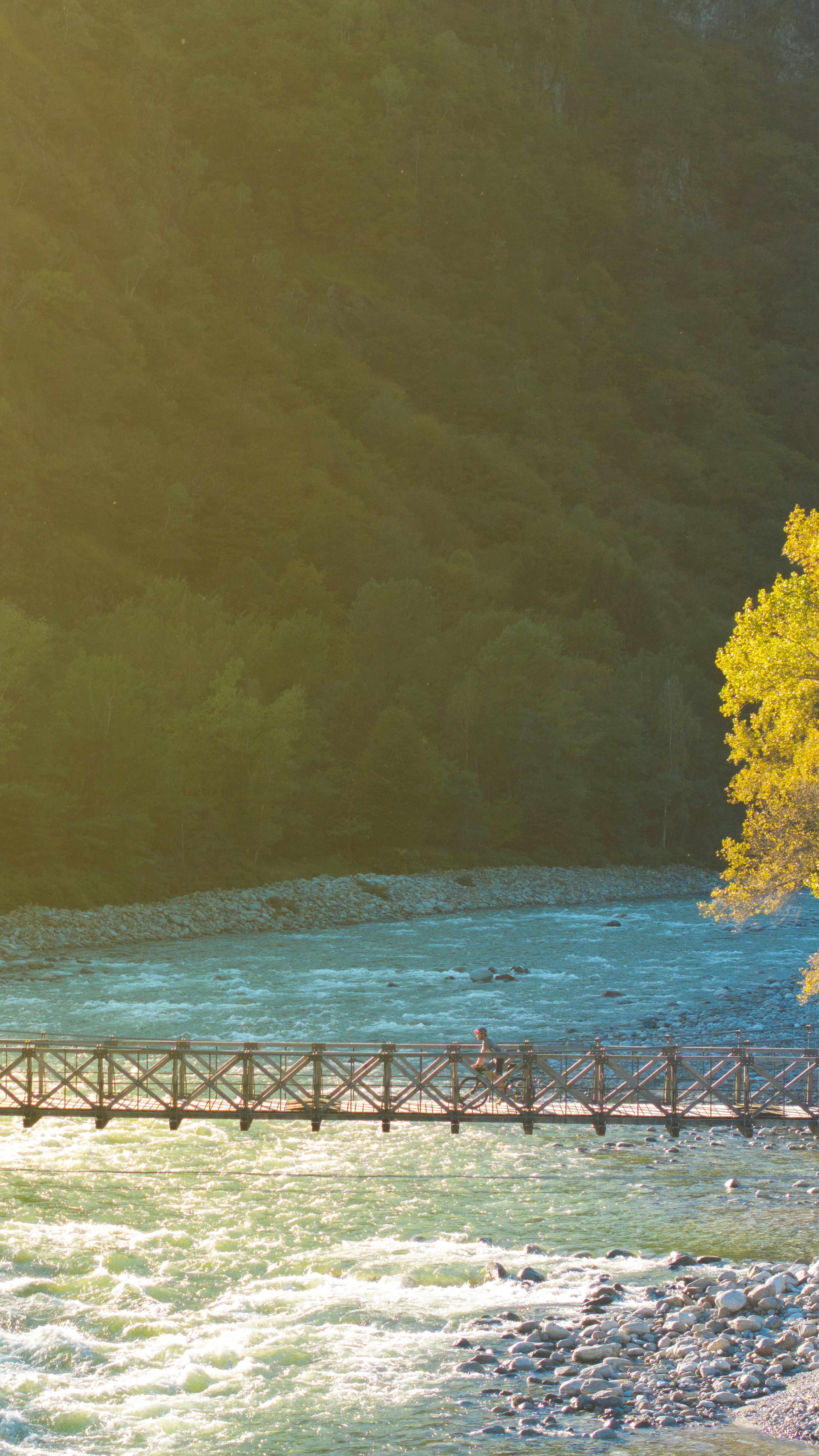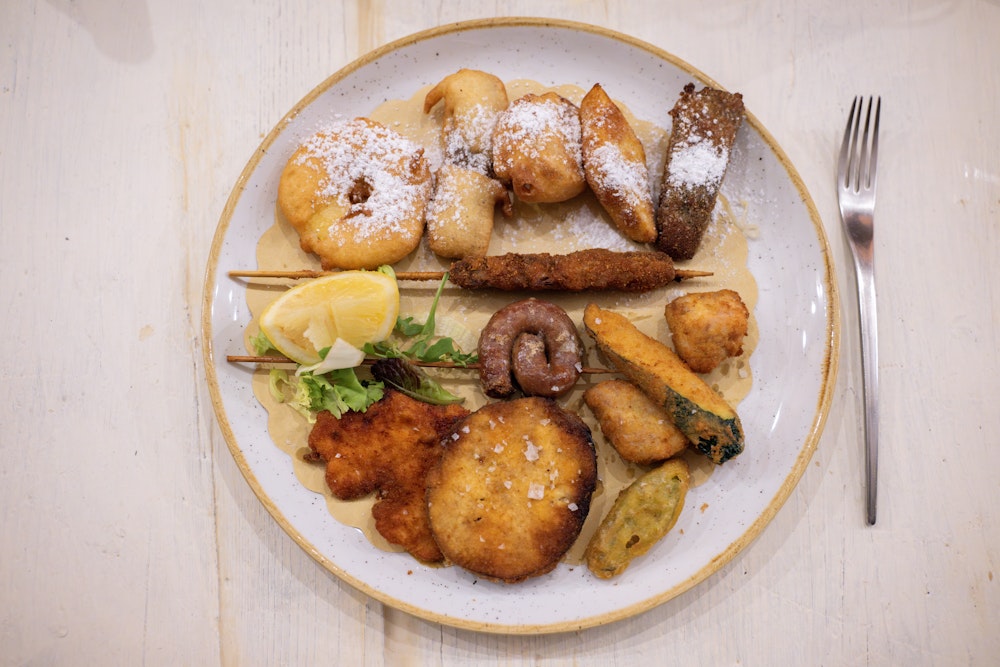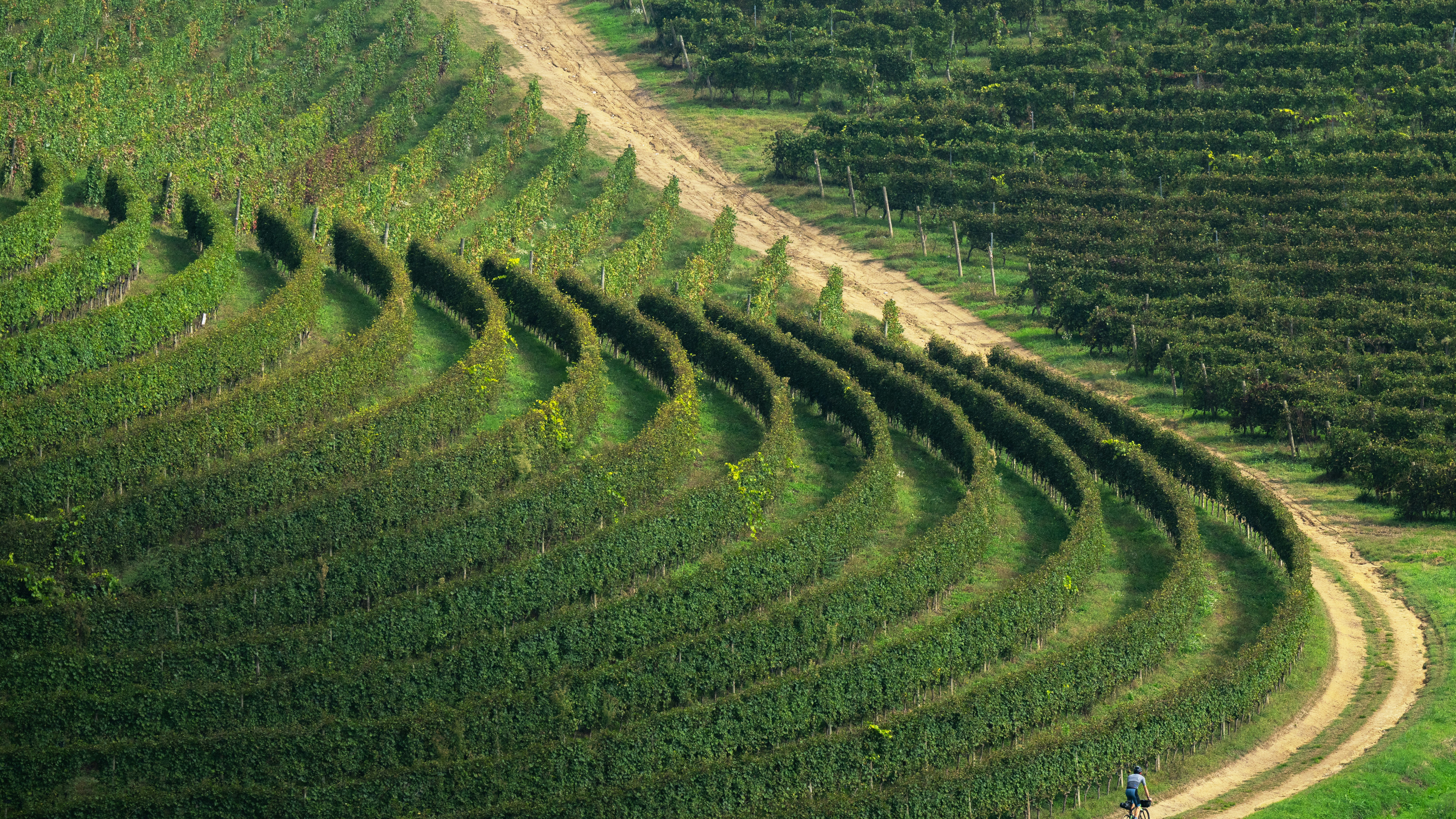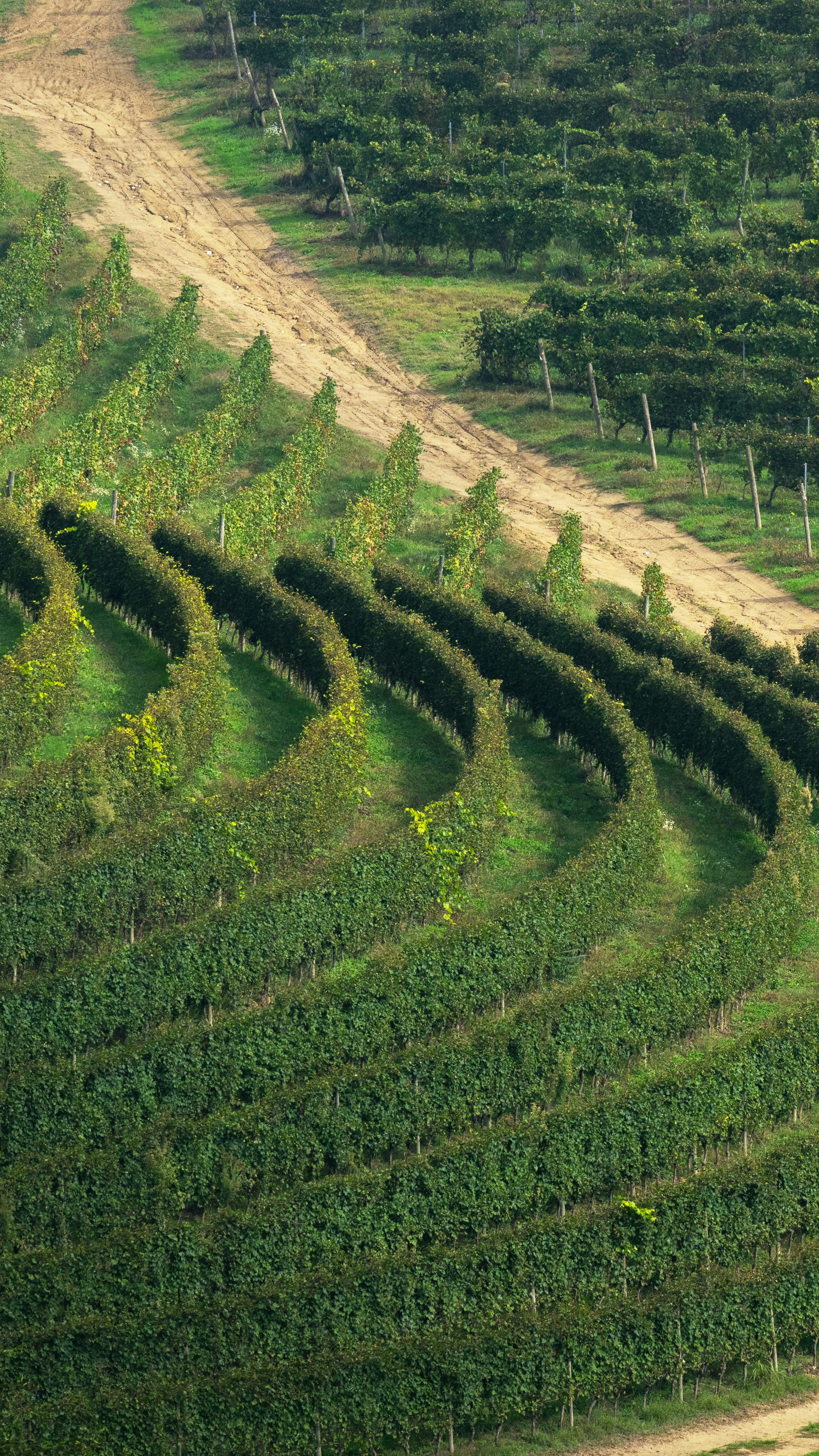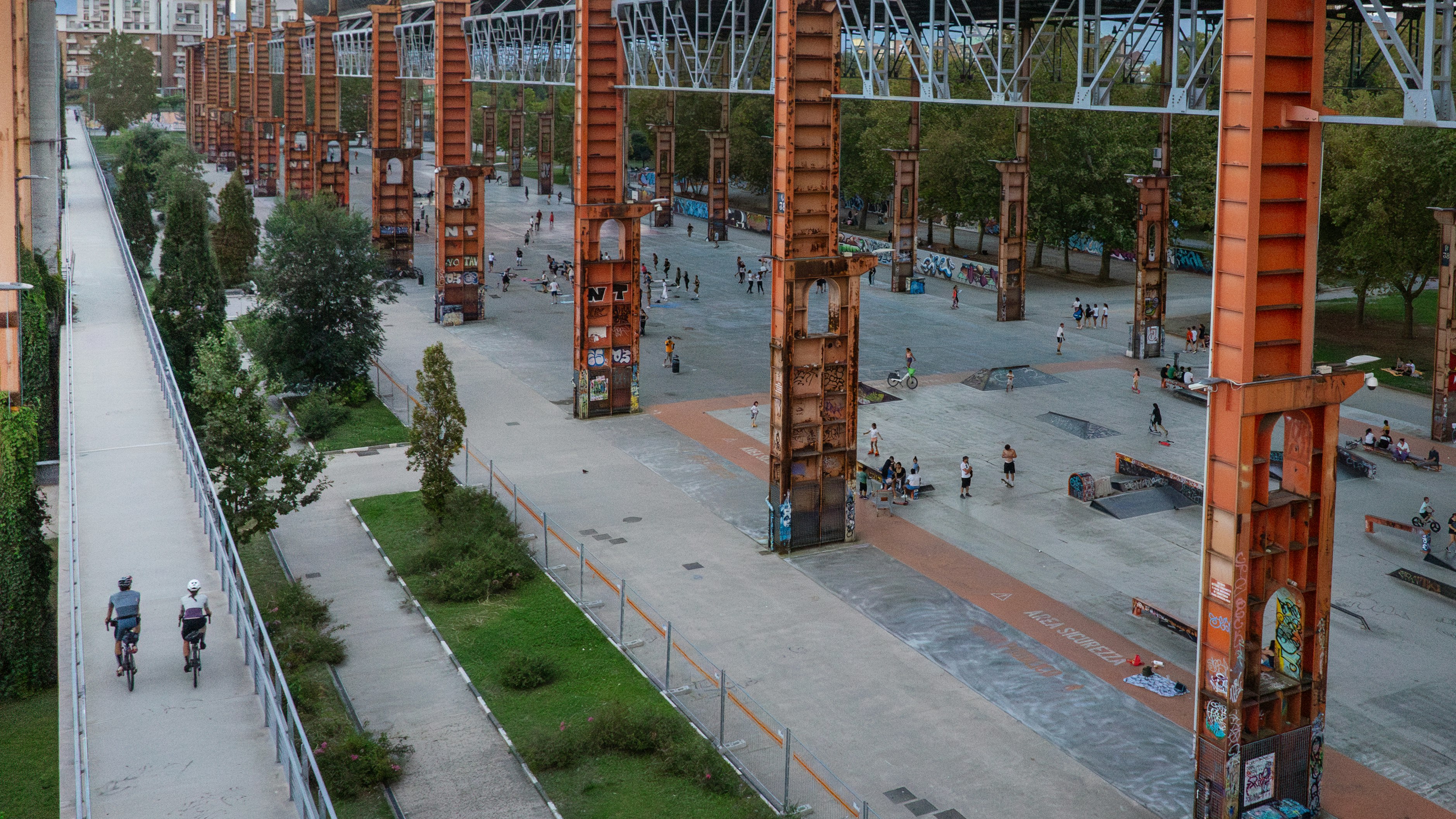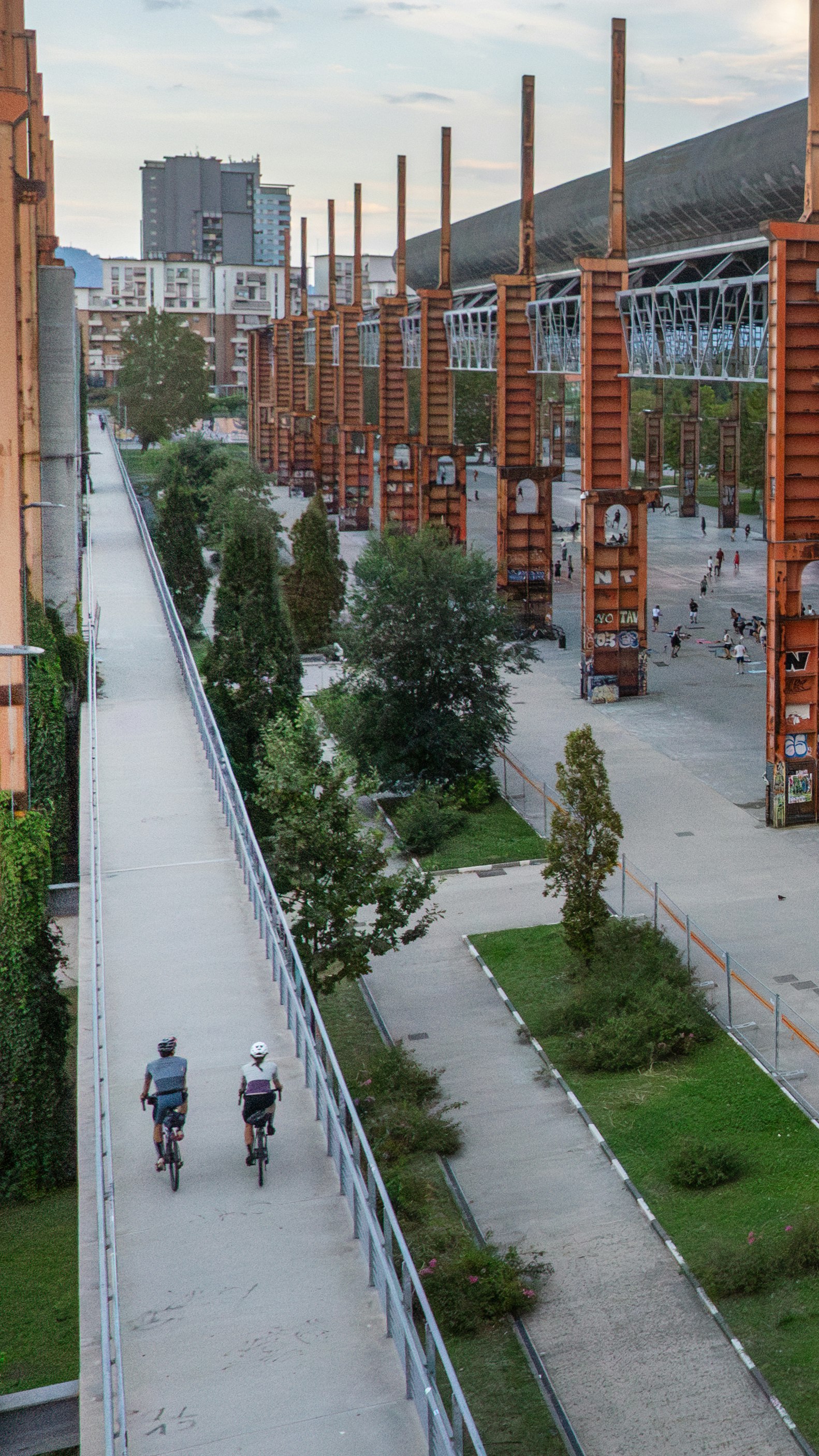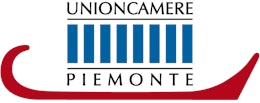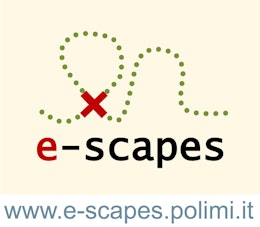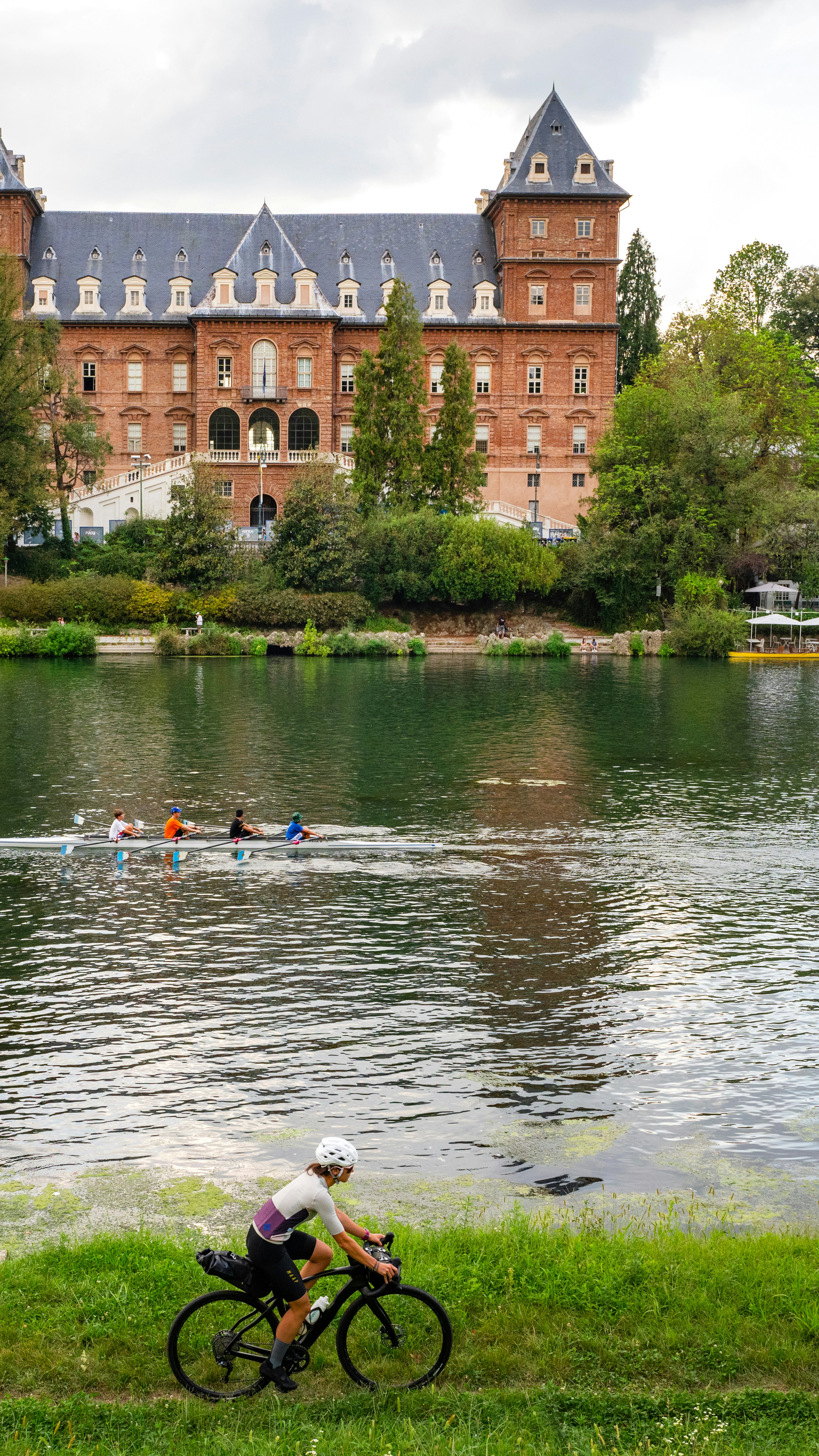
Grand Tour
All of Piedmont's UNESCO sites on a single track: a fil rouge, running for over 600 km, where nature, history and architecture come together in an extraordinary landscape.
Period
Mar - Nov
Elevation difference
6661 m
Total Length
661 km
Duration
7/10 Days
T
We then realised that, rather than aiming straight at the destination, what we really like is to cycle between places we consider so beautiful. Knowing that the space in between is not empty, but simply full of different, albeit less important, things. It is precisely this emptiness that we seek: a holiday, to get away from everyday things, to see the world with new eyes. To choose the edge, the unexpected, the dirt road instead of the paved one. To let the landscape get into us, to mix it in with the physical strain, which makes our eyes more attentive allowing to see better, to understand the things we observe beyond appearances and, just as they say, beyond clichés. Places that we pass through by ploughing across the surface, but where from time to time we can stop to look at the depth, to read into the most hidden folds of the landscape, to intus-legere, to understand, as the Romans used to say. Allow space for time and silence, and listen to humbler places, rather than rushing to catch up with those who shout louder. Especially in these years when the phenomenon of overtourism has led to distorting the beauty of so many places, making them, in fact, inaccessible.
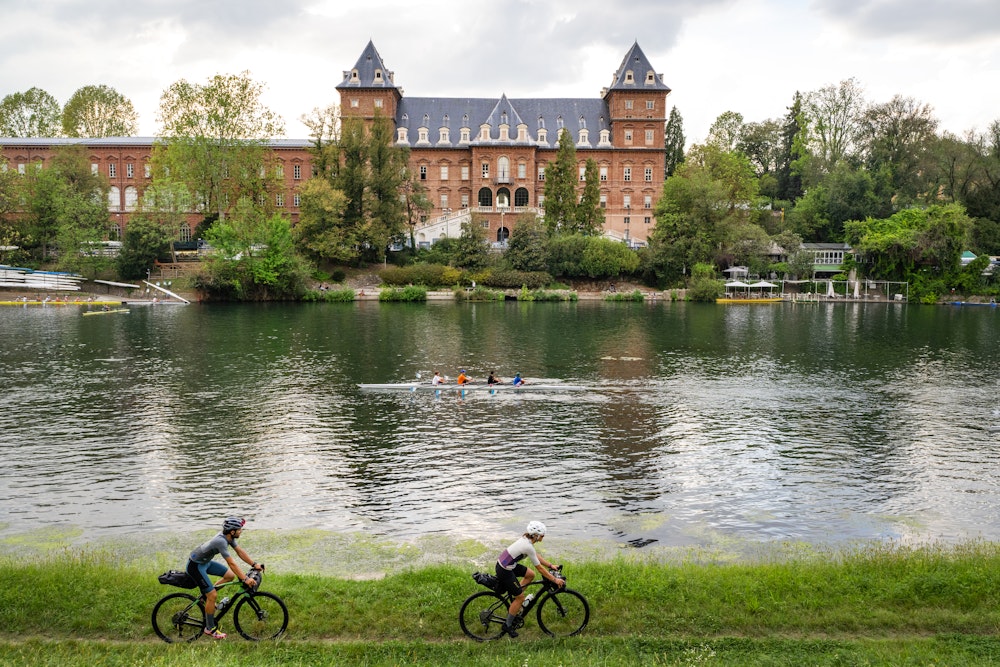
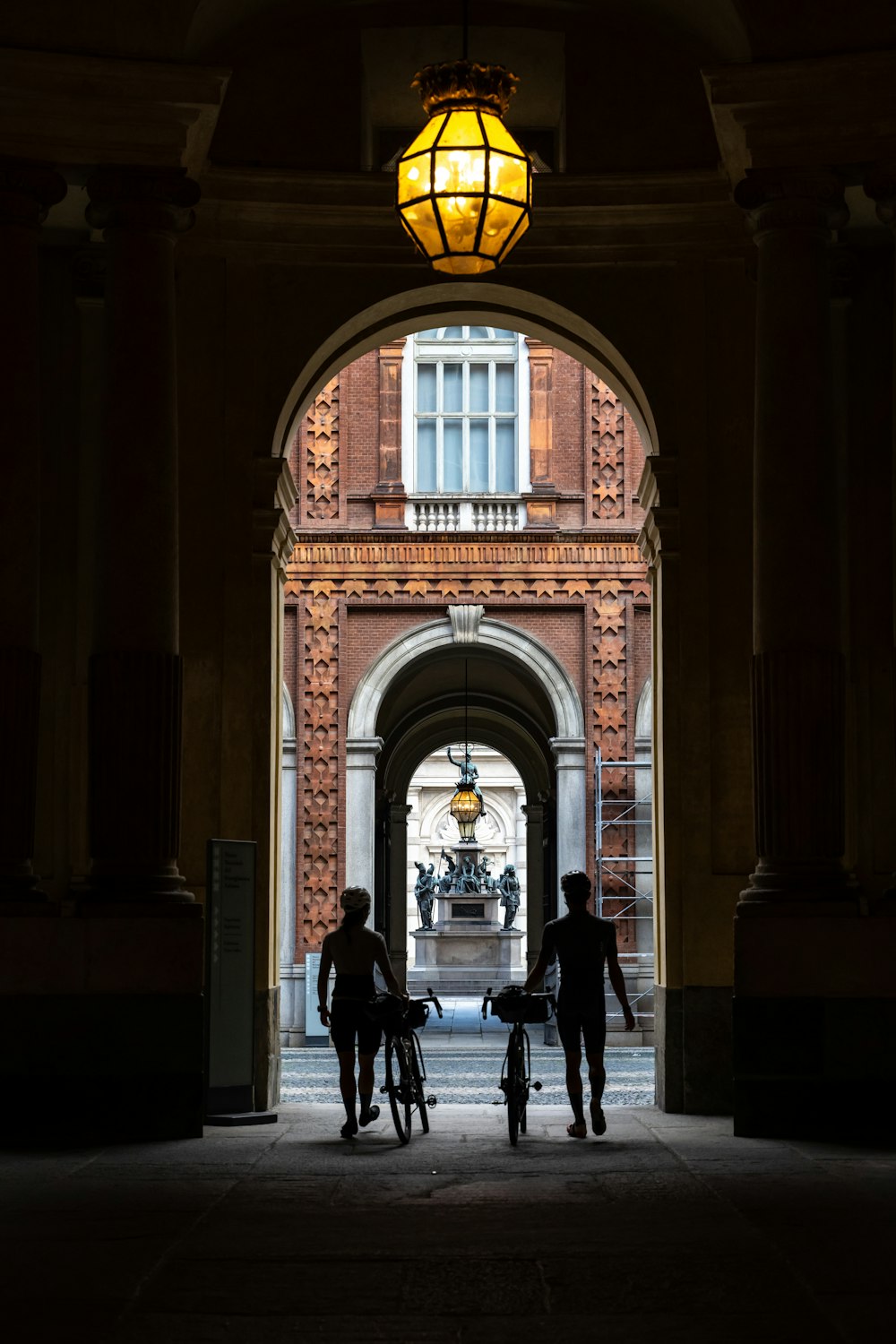
Impressed in our memory, a memory which the tour made us literally embody, there remain environments, landscapes, panoramic views, forests and plains, small villages to pass through, small country churches, but also a votive pillar at the crossroads of two country roads, a café or a pastry shop under the arcades of an old town centre or a monumental tree that has seen the history of Piedmont go by under its branches, as well as amidst the walls of a factory, along the banks of a canal or in a contemporary art museum. A history that makes us look at the landscape not only across its environments and vistas, but also by interpreting it in a contemporary key. A balanced combination of past and tradition, but where we can also see signs of the future and innovation.
We started out from Turin with the idea of riding the loop clockwise: we are not sure why we made this choice, perhaps we just wanted to cycle for a while with the sun in our face in the morning, and close the loop by riding westwards, watching the sun go down, chasing the last beer after a climb ascended with bated breath.
Leaving and arriving in Turin is certainly convenient, getting here by train or plane. But above all, it’s nice to cross the city starting right from the river Po, which flows at the foot of the Hill, a natural Reserve of Mankind and Biosphere, as well as a recognised UNESCO site. As are the Royal Residences that overlook the river, with the castles of Moncalieri and Valentino, the Villa della Regina, and then to cycle across the command centre with the Cavallerizza, Palazzo Carignano and Palazzo Reale. And maybe, before really setting off, climbing again as we did to Monte dei Cappuccini, from where you can embrace at a glance almost half the whole route and recognise some of the places that we will later reach or see up close during the trip, such as Monviso, the montagne olimpiche, the Sacra of San Michele and Rocciamelone, the Lanzo valleys, Gran Paradiso and Monte Rosa.
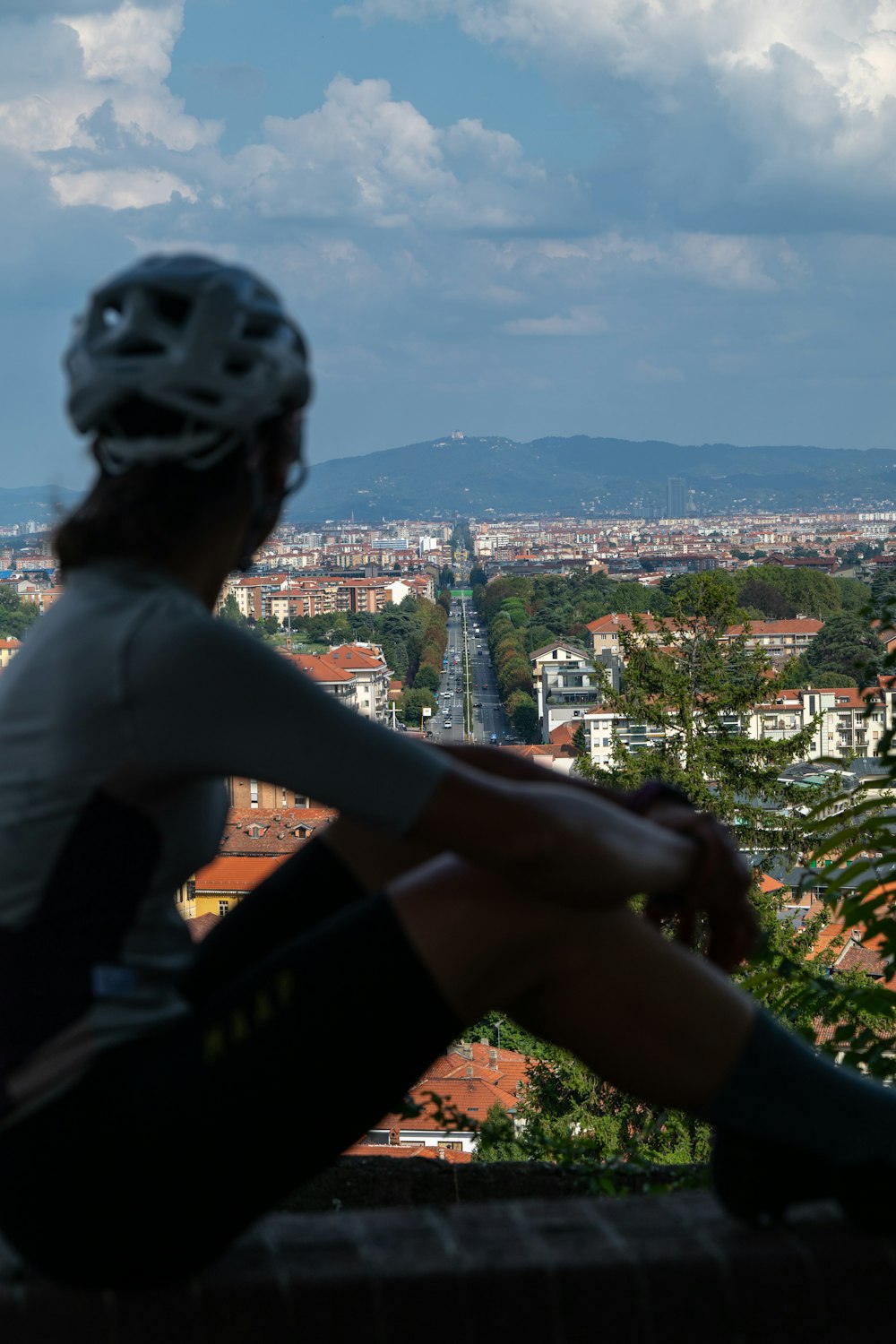
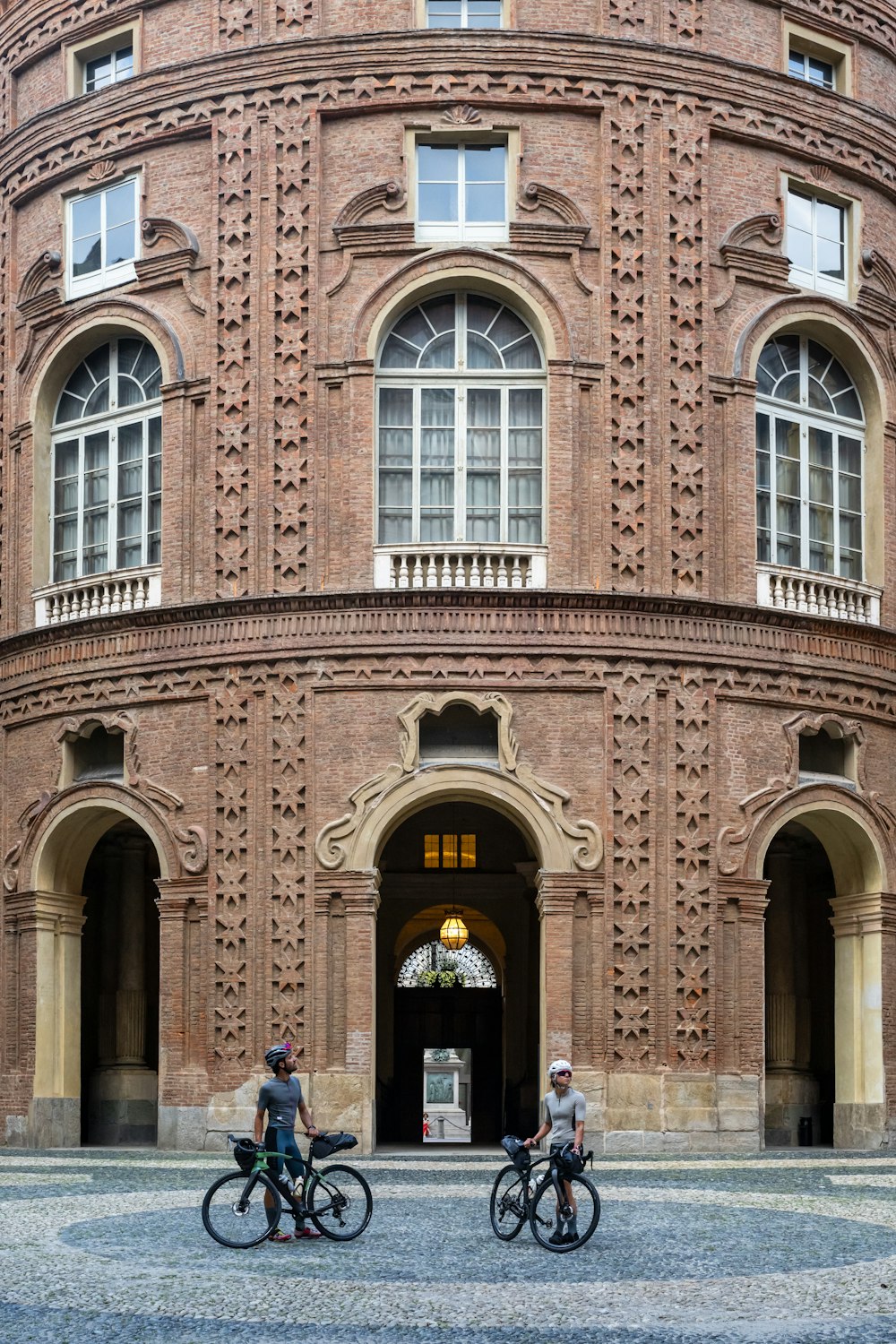
Finally on our bikes, we literally passed through the Roman Palatine gates, to follow the Dora Riparia and then the Stura river to Venaria. The natural habitat of the rivers, the history of industry, the glimpses of the Pié Monte mountains: the DNA of the region is almost all here, within just a few kilometres. What better anticipation of the many places that we will find along the 650 kilometres that we will travel?
We quickly slip out of the centre, trying not to be distracted by the cafés, pastry shops, vermouths and various bicerin (in dialect, a small glass of wine), and follow the river, passing by the Porta Palazzo market, just to stock up on some dried fruit in a wonderful grocery hidden behind the market stalls. We immediately get into the right mood by passing through Parco Dora: rivers, canals, factories, open horizons towards the mountains that embrace Turin and that will guide us in the coming days, from north to south.
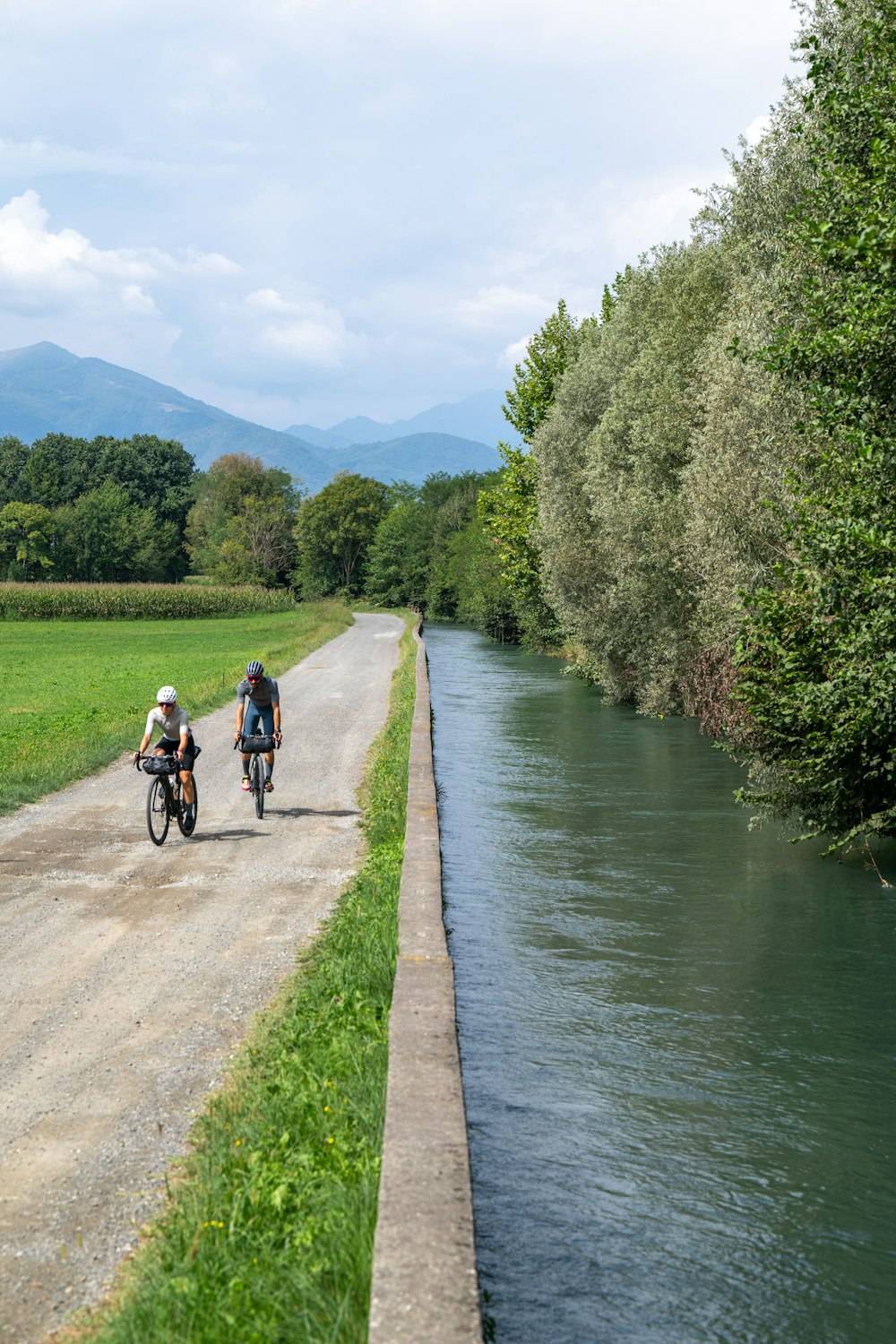
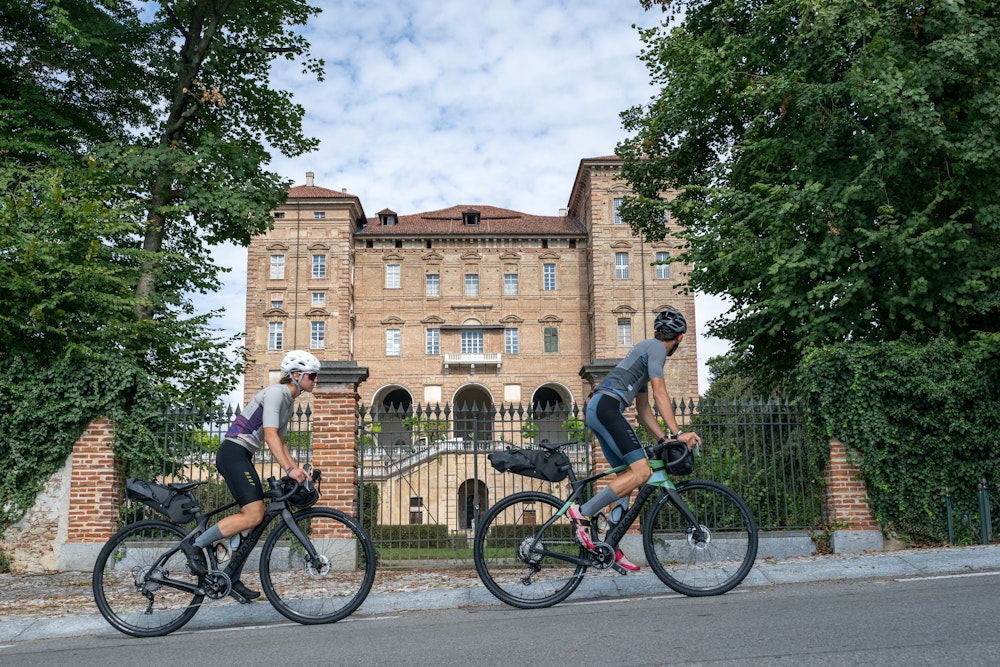
Leaving the wooded and dry lands of the Vaude, we quickly arrive on the Orco river at Cuorgnè with its beautiful arcades, the monumental factory of the Manifattura, overlooking the river, and after a few kilometres on the main road, we touch Castellamonte paying little attention, since we are heading straight for one of the stretches we like best: the dirt road that follows the Canale di Caluso at the edge of the hill, between woods and open spaces, which takes us straight to the Castle of Agliè, passing the Olivetti factory where the legendary Lettera 22 was manufactured. We leave the canal and ascend to the village and the Castle of Agliè, where we can also ride inside the park, and then move towards the hills to the north, passing by the Villa il Meleto, so dear to Guido Gozzano. Up and down hills amidst villages and ricetto (small fortified areas) at the foot of beautiful and hidden valleys such as the Valchiusella to then reach Colleretto Giacosa.
The countryside between the Vaude plateau and the hills soon brings us closer to the splendid vineyards of Erbaluce, in the midst of the grandiose Anfiteatro Morenico of Ivrea: one of the best spots for frolicking along endless dirt roads, between streams and lakes left to us as a gift from the great Balteo Glacier, which until 10.000 years ago stretched as far as where we are now, coming down from the Valle d'Aosta, also giving us the moraine Serra hill, perfectly straight and creating a uniquely recognisable landscape out of the plain between Biella and Turin.
We will go back and climb it tomorrow, because Ivrea certainly deserves a stop, if only to get a more complete idea of the work of Camillo and above all Adriano Olivetti, the visionary entrepreneur who, at least fifty years ahead of his time, saw Ivrea as the city of humankind, at the centre of a new landscape: architecture, city planning, household, factory and countryside merged in a system that we can still admire today: a unique and exemplary case of the Industrial City of the 20th century.
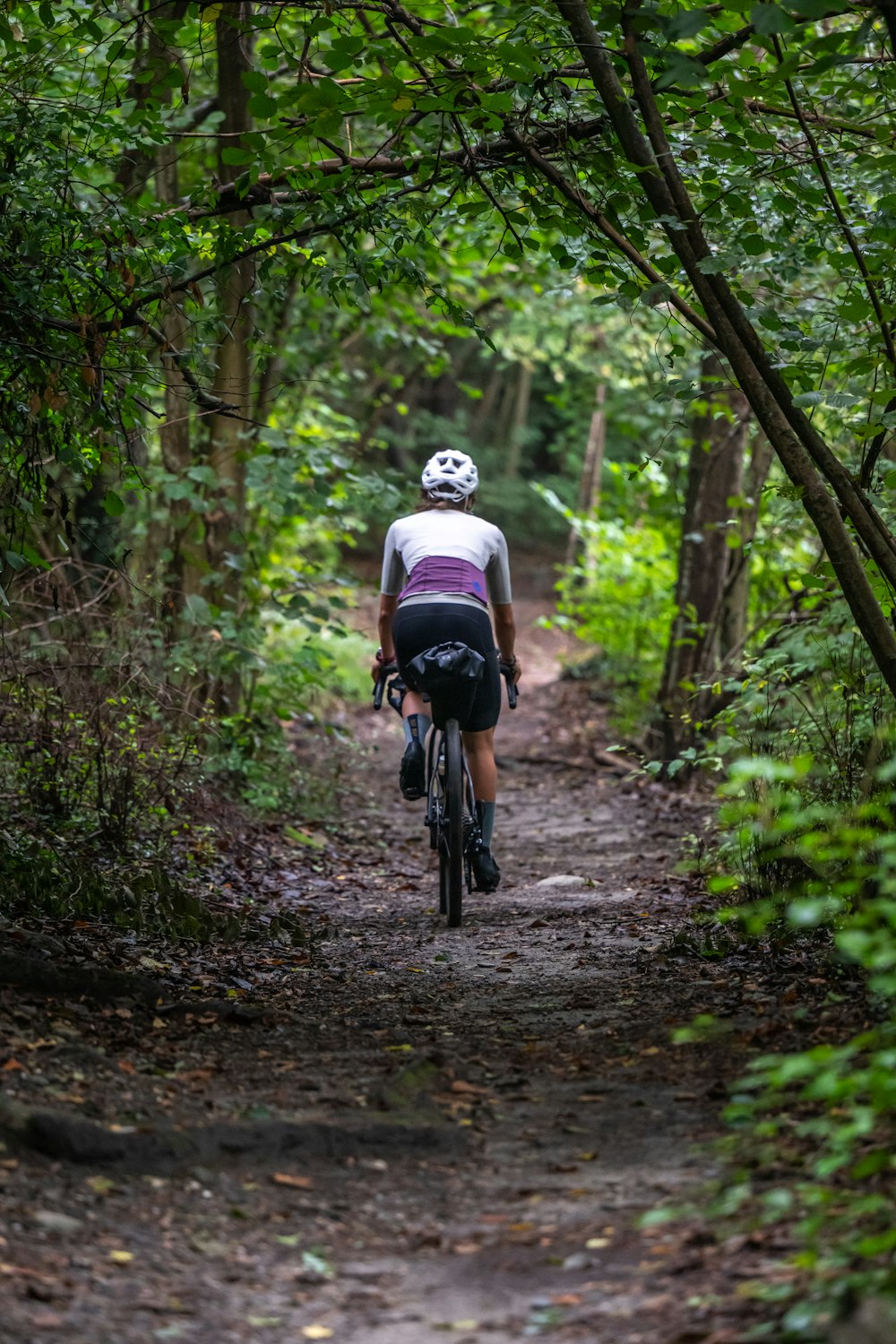
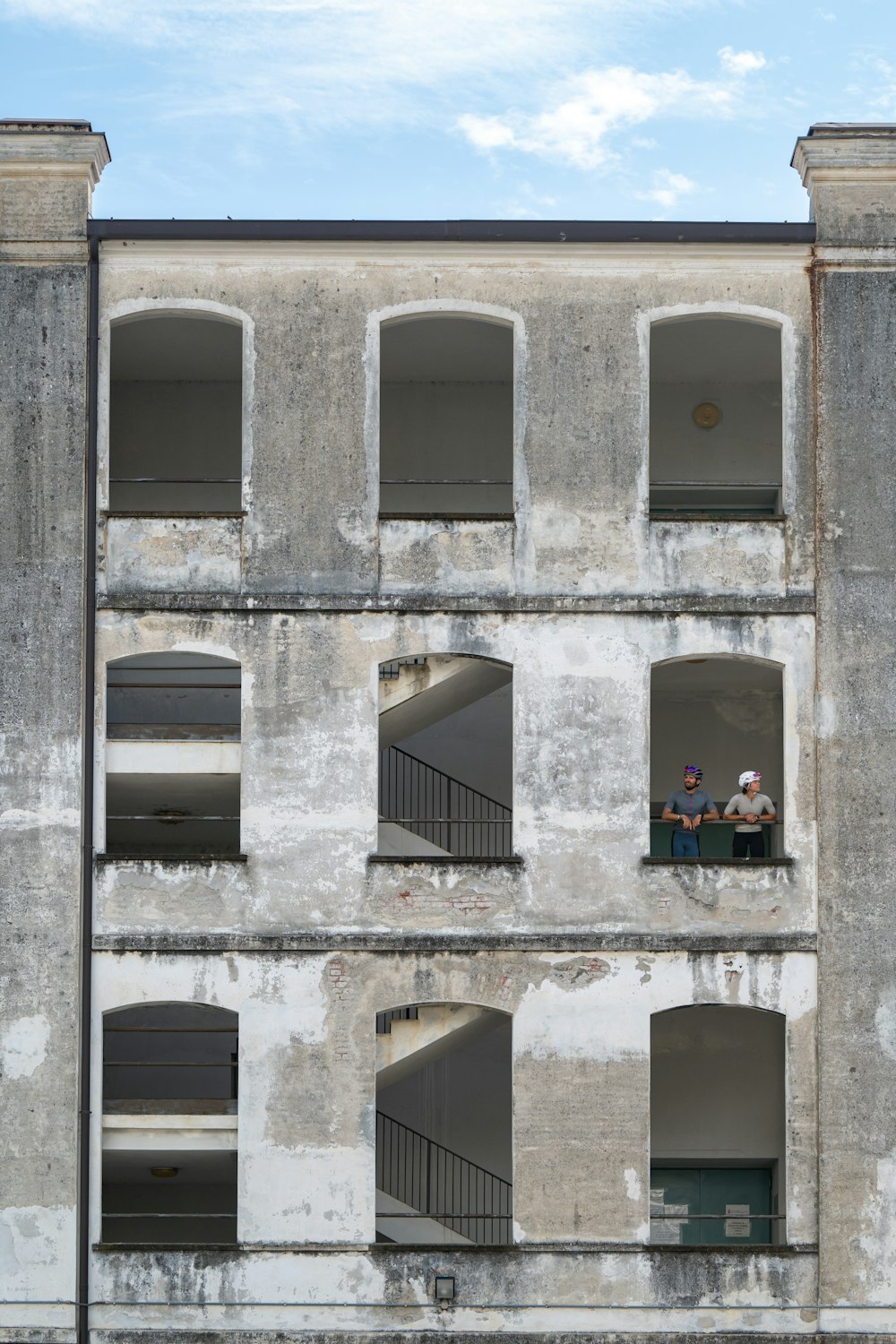
We leave Ivrea along the Via Francigena, passing by Lake Sirio, through a maze of dirt roads and single tracks, which spare us the busiest roads and bring us, with a bit of hard work, to Andrate, at an altitude of about 800 metres. From here starts the amazing route that crosses all the Alpi Biellesi, from the Dora Baltea valley to the Sesia valley along sixty-five kilometres of mountain road overlooking the plain between Turin and Milan. We cover it from Andrate to Bocchetto Sessera, passing along what everyone knows as the Tracciolino all the way to Oropa, to then descend to Biella.
A place where, at every bend jutting out towards the plain, you feel like rolling out your mat to have a snooze in the belle-etoile style, to wait for sunset or dawn while gazing at the stars; but Giuseppe and Nazarena, the devoted custodians of a very special place, are waiting for us at the ancient monastery of the Trappa.
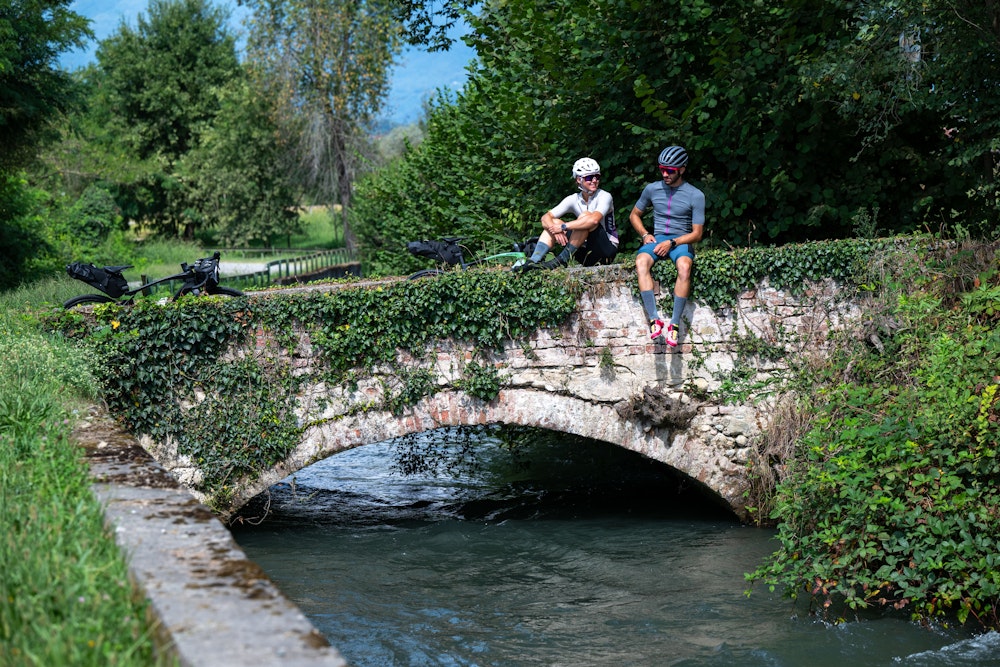
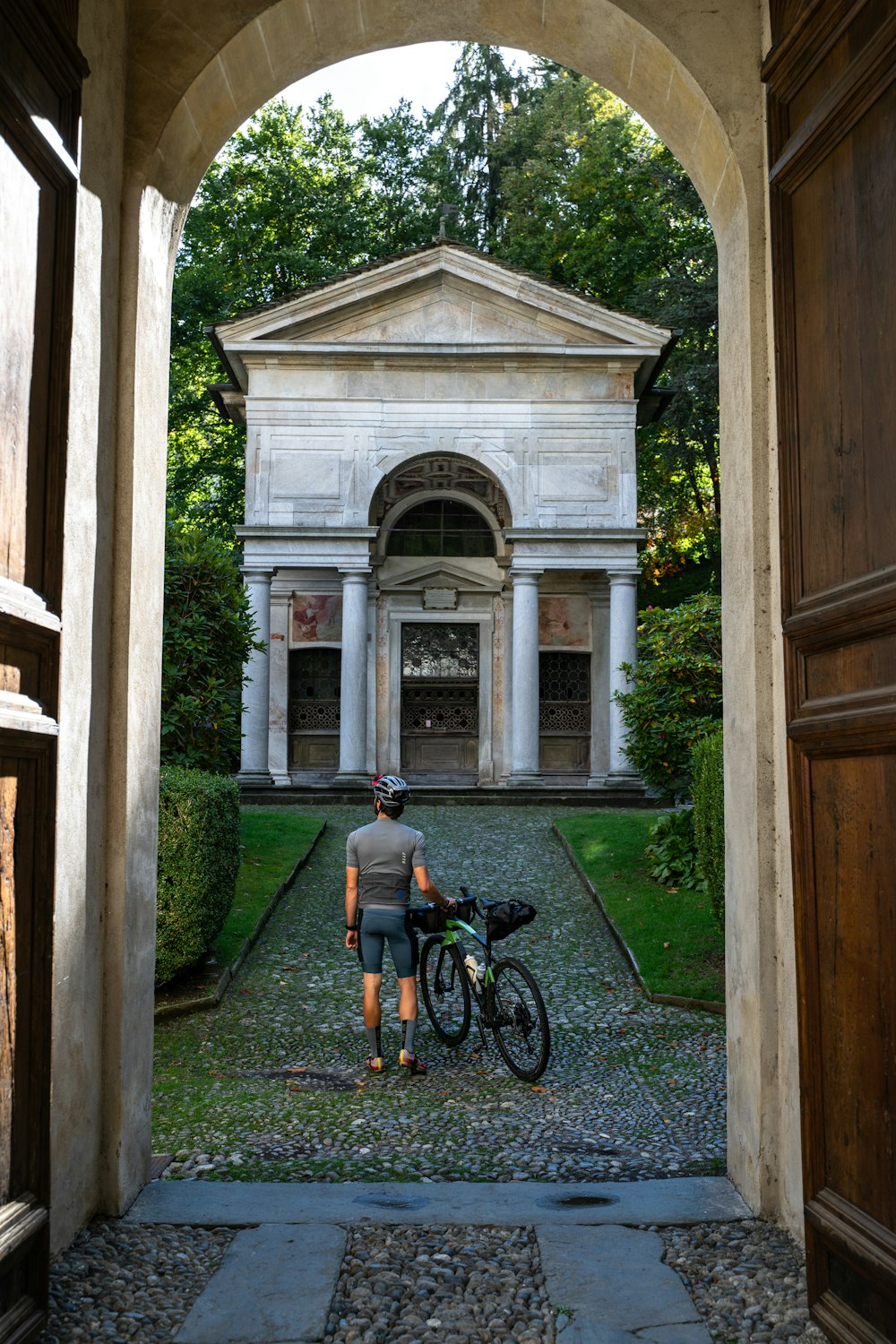
Here we stopped for the night, in the small bare rooms that housed the pilgrims, just opposite the monumental Porta Regia. The silence of the evening and the sunset over the plain are the most vivid memories this trip has left us. The itinerary at this point provides the option of descending to Biella via the abandoned route of the old tramway and the Parco della Burcina- if you come here in May, don't miss the famous rhododendron blossoms -, to climb up the magnificent Valle del Cervo, or alternatively to continue on, passing through the Rosazza tunnel and the Sanctuary of San Giovanni di Andorno, arriving directly in the river Cervo valley at Campiglia.
We went down to Biella and visited the village of Piazzo, the beautiful historical centre and the post-industrial spaces along the river Cervo of the Fondazione Pistoletto Cittadellarte and the plant of Maurizio Sella’s former a woollen mill, working at innovation as well as preservation of the historical memory of the Sella family, full of entrepreneurship, politics, love for the landscape and its mountains. From here we went up the valley, enjoying a refreshing dip in a lama, as they call the natural pools here, which are also excellent for fishing.
After passing Campiglia, we attacked the road that everyone calls Panoramica Zegna and which climbs towards Bielmonte, with scenic views towards the plain and Monviso. Having reached Bocchetto Sessera, we descended on the other side, heading for another Bocchetta, Bocchetta Boscarola. This is where the fault separating none other than the African and European plates passes, a unique spot for geologists coming from all over the world. We followed the fault line until our arrival in Valsesia.
From Scopello, we followed for the first twenty kilometres a beautiful section of the river's most recessed banks, leaving behind Monte Rosa – the ‘Chimera’, as the writer Sebastiano Vassalli called it – following its course and coming out onto the piana di Varallo. We had a quick dinner on a terrace overlooking the mountains, behind the Sacro Monte, a UNESCO heritage site, where Elena and Enrico were waiting to reveal to us the secrets of this masterpiece, the result of an extraordinary combination of landscape, architecture and faith. The old town is also an excellent starting point to discover another UNESCO site, the Sesia-Val Grande Geopark, where traces of the Supervolcano can still be seen, made visible by the force of the glaciers and the erosion of the rivers: like an X-ray of the earth highlighting the succession of geological eras.
It is a new day and here we are back on our bikes, cycling along the river banks for more than sixty-five kilometres. At first, between villages and canals, then on dirt tracks along the banks of the Sesia river, going slightly downhill, trough forests of oak, hornbeam and poplar. It was only the need for a water fountain that led us out of this wonderland, reaching one of those places that can only be found in certain corners of the Po Valley, with a trattoria with fixed-price menu: ten euros including drinks. This is incredible: we are right in the centre of Europe, literally, where the two corridors that cross the whole of Europe and connect Kiev with Lisbon and Rotterdam with Genoa intersect like a modern Cardo Decumanus crossing.
The waters of the Canale Cavour also flow here, in a spectacular siphon that passes under the Sesia river. Being here on a bicycle, on a magnificent dirt road in the whisper of the river and protected from the roar of the lorries and high-speed trains whizzing by a short distance from here, was a truly unique experience.
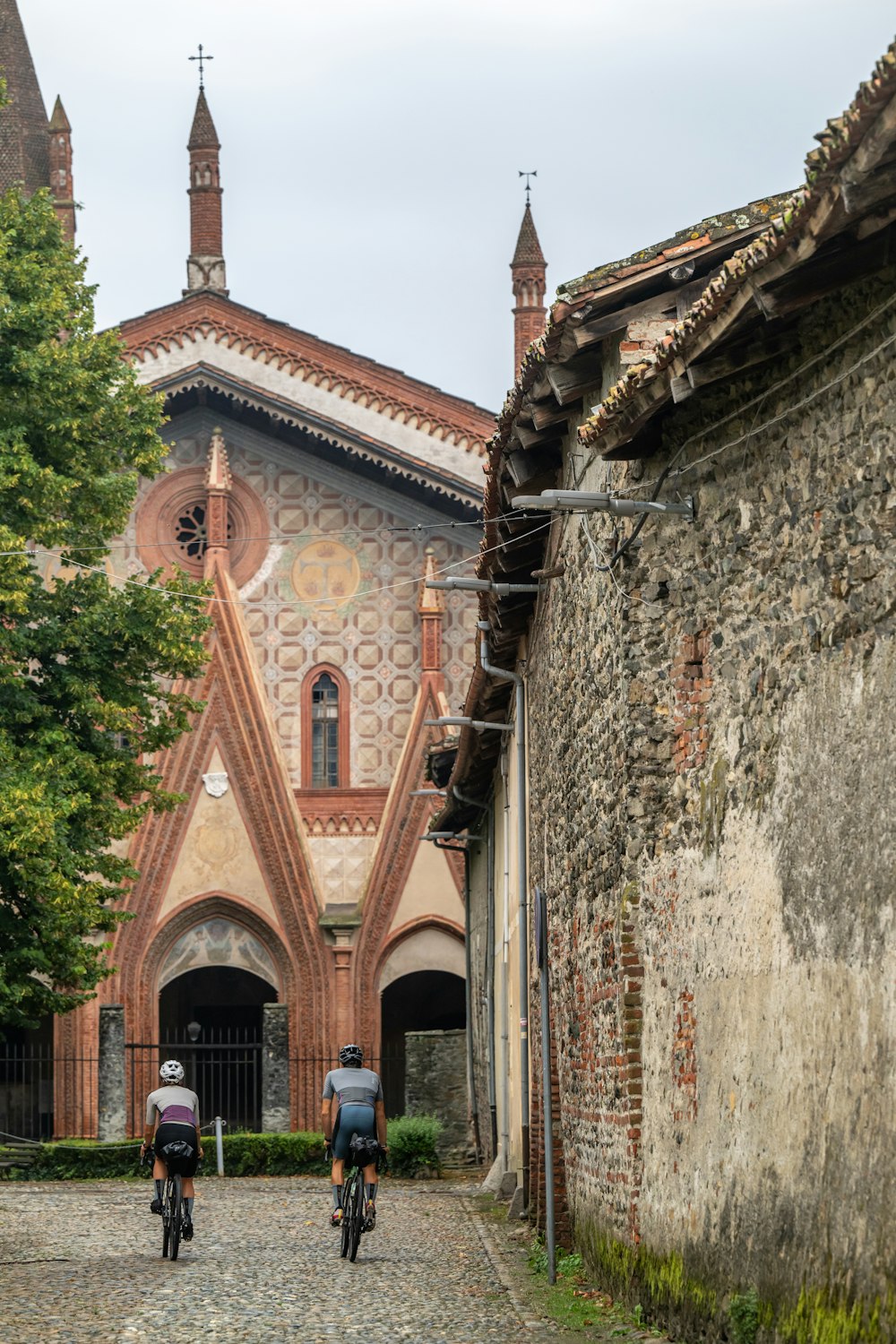
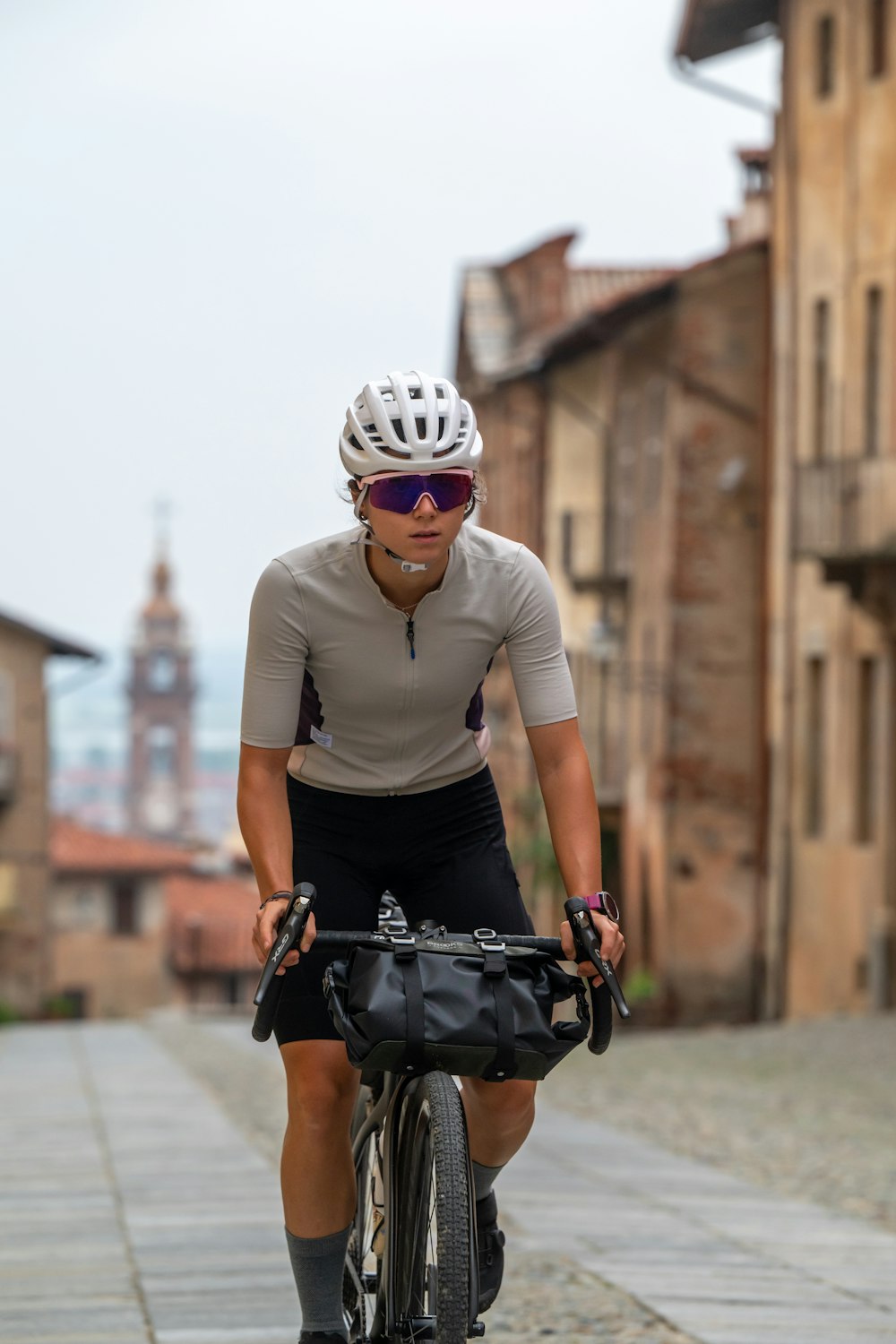
We realise that the infrastructures – railways, roads, motorways – that belong to the fast and long networks of communication routes, are in the end close relatives of other infrastructures, also long but certainly slower, such as the Canale Cavour and the Via Francigena. All together they cross what I like to think of as a kind of Central Park, an extraordinary space that can be reached in just over half an hour by train from the cities of the old industrial triangle and which is now a paradise for bikepacking and all kinds of bicycles.
Having come all this way we cannot miss a tour of Vercelli, in the historic town, arriving from the avenues that surround it, such as the one named after Garibaldi – recently transformed into a beautiful urban park – that leads to the station. A quick look at the Basilica of Sant'Andrea and a stop in Piazza Cavour, where we enjoy an ice cream that alone is worth the entire trip and provides us with the energy to set off again, now in sight of the hills of Monferrato.
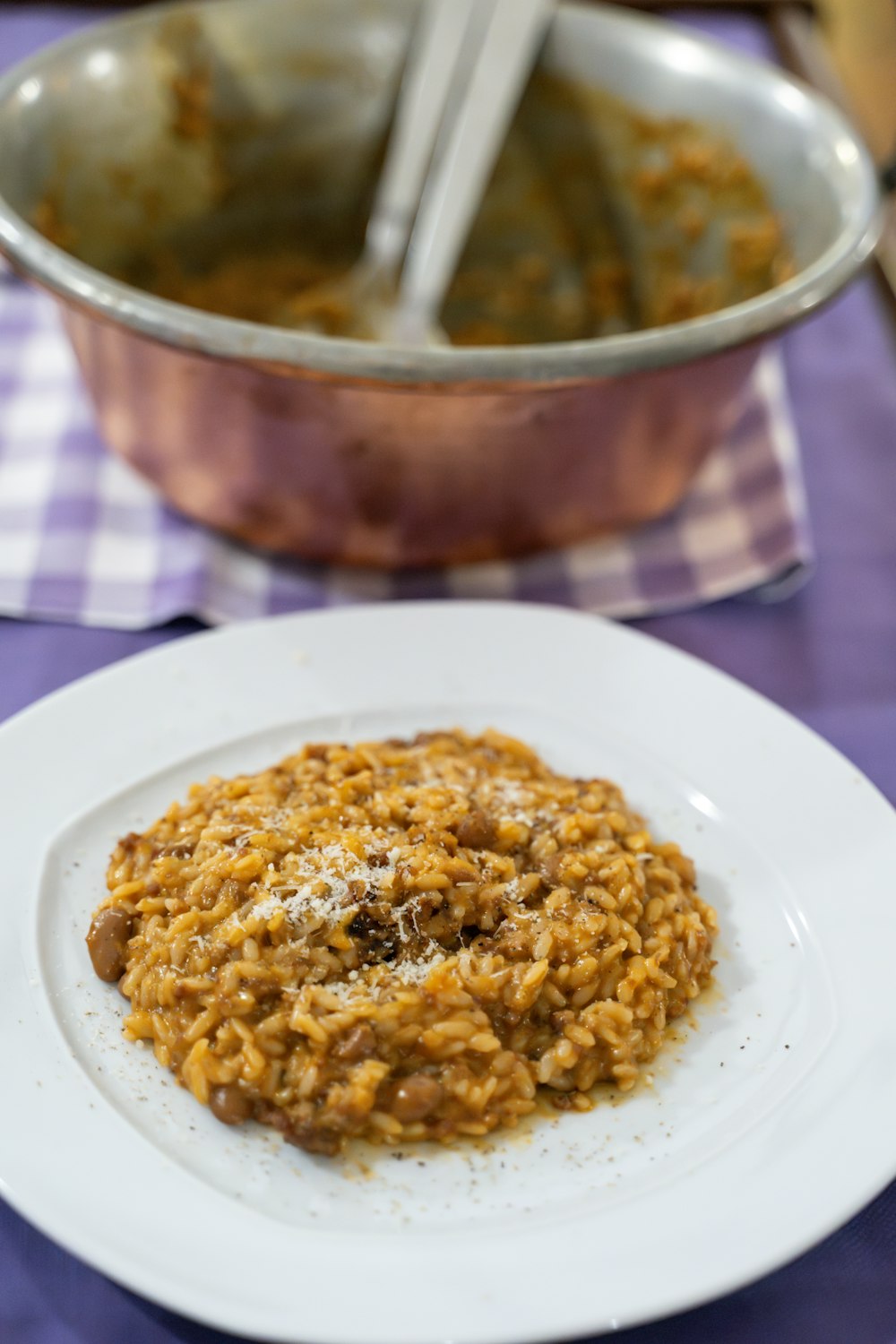
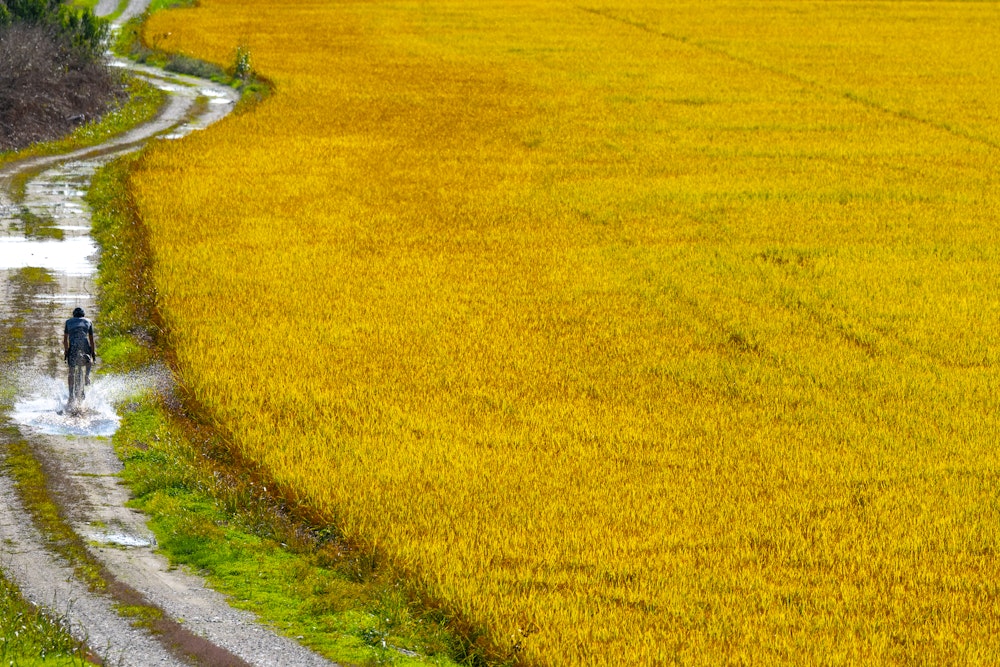
Like diving into a yellow hue, which will take us as far as the Po. This is a productive landscape, where everything is closely linked to natural resources: today it stands as the result of man's millenary work, made of rice paddies and canals, but also of hills of marl, which was quarried from the hills across the river and processed in cement factories. The factory in Trino was recently transformed into a very special museum, bringing together the still active production activities, industrial archaeology and contemporary art.
We travel along the Po embankment to the town of Casale, a hidden treasure, the true gateway to Monferrato. From here, having left behind the monuments and enterprise of the cement industry, which is restoring new spaces and architectures for the city and its tourist development, we climb the hills. We go from panoramic viewpoints to white roads, villages and monuments of the history of Italian industry, such as the kilns of Ozzano and the castle of Cereseto built by Riccardo Gualino. We reach the Sacro Monte di Crea UNESCO heritage site, descend on Moncalvo and arrive in Asti, always accompanied by the afternoon breeze, on the crest of the hills.
Asti, too, is a marvel of treasures, but we have to go quickly through the historic town, safe in the knowledge that we will return here at a later date. Before leaving the city, however, we stop in the perfect garden of the Museo Mazzetti cafeteria: at least the time for a coffee, before tackling the gentle, quiet climbs that take us to the hills high above the Tanaro valley. This is the place we prefer, where from afar we watch all-to-popular areas of Barolo and Barbaresco on the other side. We crossed them passing through San Martino Alfieri, the UNESCO residence of Govone, the village of Guarene, finally leaving these places to descend on the town of Alba. Here we stopped for the night, but had we still had energy to cycle further, we could have done the same, in Pollenzo or Bra, which are only about twenty kilometres away. In short, every place here deserves a dinner and an overnight stay.
The following day we ride on the banks of the Tanaro and along the towpaths of the Canale Verduno. We look out over the river at the spiaggia dei Cristalli for one last glimpse, and quickly get back on our bikes with lights on and shoulders tight, for the short stretch on the busy road that crosses the river and takes us into the village of Pollenzo, with its UNESCO-listed castle and the imposing buildings of the University of Gastronomic Sciences. We get back on the road among the vegetable gardens, away from the state road, and soon arrive in Bra: the best place for a break. The Slow Food movement was born here, by no coincidence, as in fact the culture of good and fair food can be sensed in every bar, restaurant and shop of this beautiful town. We have thus covered a unique stretch of road, from Casale to Bra, where the Tanaro river is the backbone of an area entirely dedicated to the culture of wine, which Mario Soldati, in his amazing journey through Italian landscapes, recounted in the book Vino al vino, describes as the major axis of a kind of ellipse, running from Moncalvo to Dogliani, where the wines are the result not only of the geology of the land, but also and above all of their position in relation to the cool morning sun – Grignolino, Barbera, Nebbiolo, Arnèis, Freisa – on the left bank of the Tanaro, or to the warmer sun at dusk – Barolo, Barbaresco, Dolcetto, Moscato – on the right bank of the river
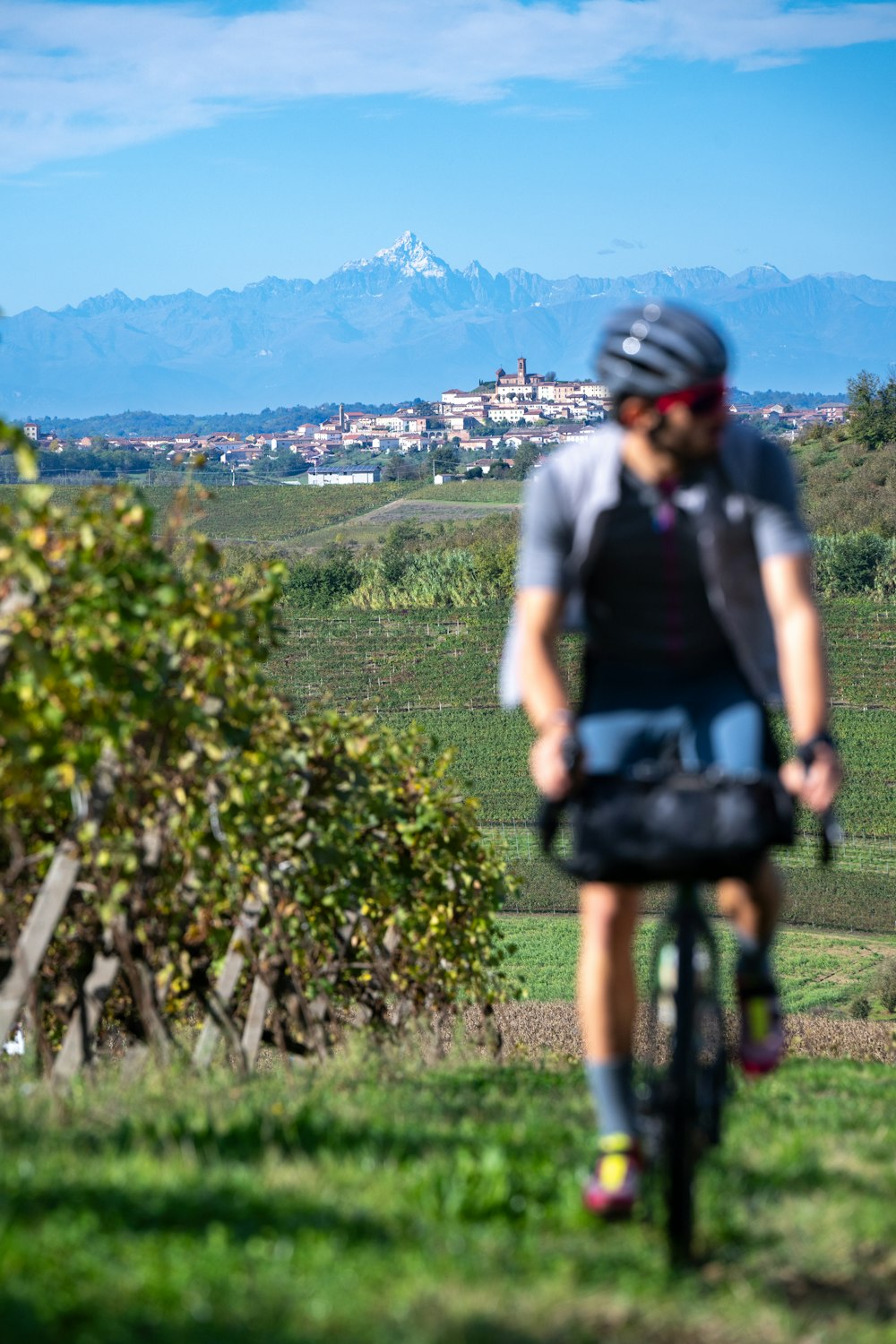
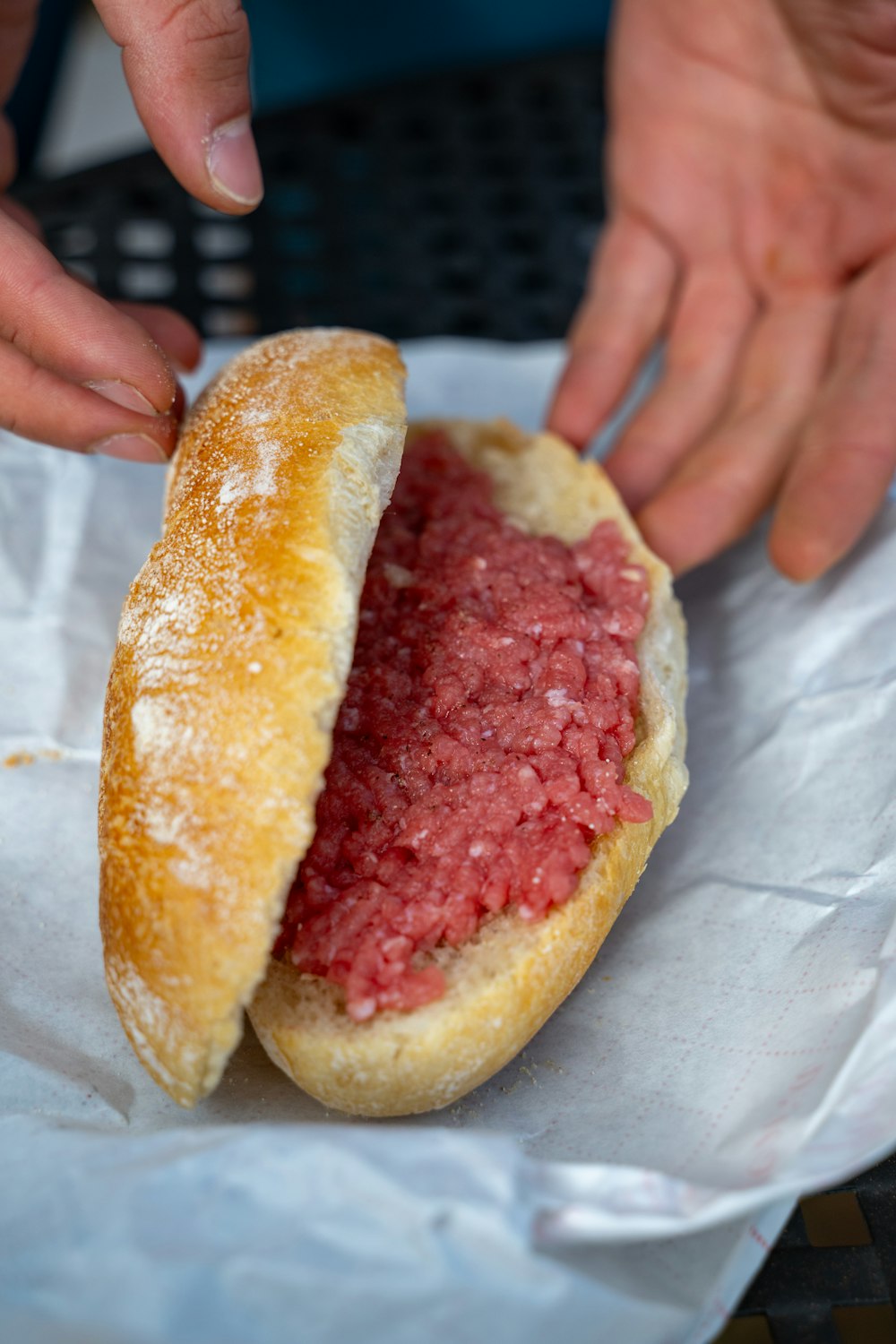
We set off again feeling nice and fresh, and we cross the countryside to reach Racconigi with its castle and magnificent park, another UNESCO heritage site. We leave the beautiful historic centre and cross the industrial archaeology sites of canals and silk factories that mark the countryside. We manage to stay on the banks of the river Maira. A technical but continuous single track, in the shade of the woods, all the way to Savigliano, that makes us as happy as kids in candy store. From here we ride to Piazza Santorre di Santarosa, for an obligatory stop at the pastry shop under the arcades, for the typical aperitif: the legendary Paulin, guarded like a secret, which puts us back on the road feeling happy, across a countryside of orchards, with the sunset in our face of the Saluzzo hills and Monviso as a backdrop.
We will spend the night in this wonderful town, and even here we can only say that we should stay at least a couple of days, but another legendary place awaits us: the Staffarda Abbey, which we reach by crossing a wade on the Po- yes, Italy's largest river is often completely dry in the countryside downstream of Saluzzo.
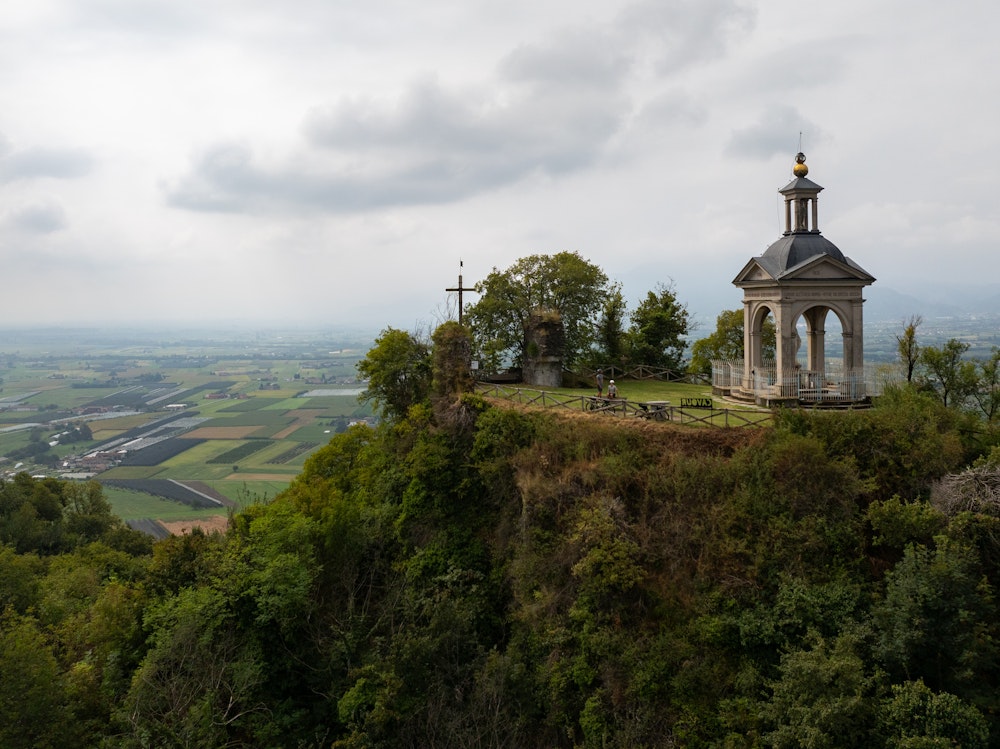
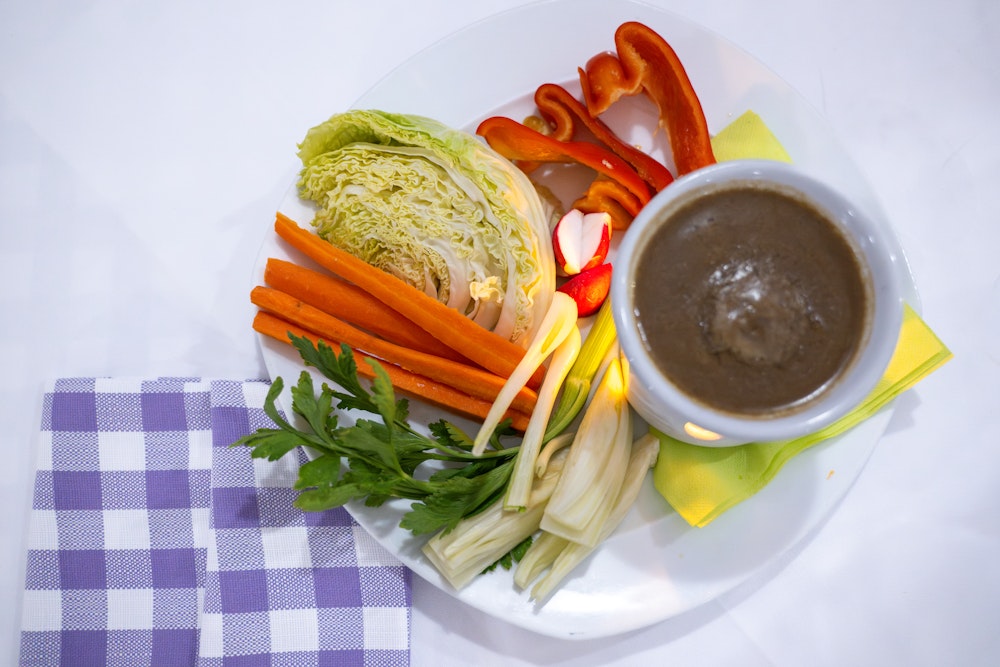
We continue through the countryside that becomes somewhat livelier, occasionally going up a few hills, following the stone road between Barge and Bricherasio, under the slopes of Monte Bracco, the Mombracho that Leonardo da Vinci already knew. We cycle towards the geological curiosity that is the Rocca di Cavour, an island mountain or inselberg, as geologists say. Here we happen upon a market day held in the shade of the ancient covered venue. We dine on wine, cheese, a peach and a homemade ice cream for dessert: what else can you ask for? We leave the village and the surrounding countryside with its magnificent villas at Campaglione. We ride along a beautiful stretch of the cycle path on the old railway line to Bricherasio, passing the caste of Miradolo, and finally reaching Pinerolo. Yet another well-deserved ice cream treat, before setting off again towards the Valle di Susa, which we reach in Avigliana, with its two lakes. The weather is dry and we can take advantage of the single track along the western shore of the small lake, before passing the large lake and climbing back up to the beautiful perched village where we can spend the night in the excellent hostel with a built-in cyclist's kitchen.
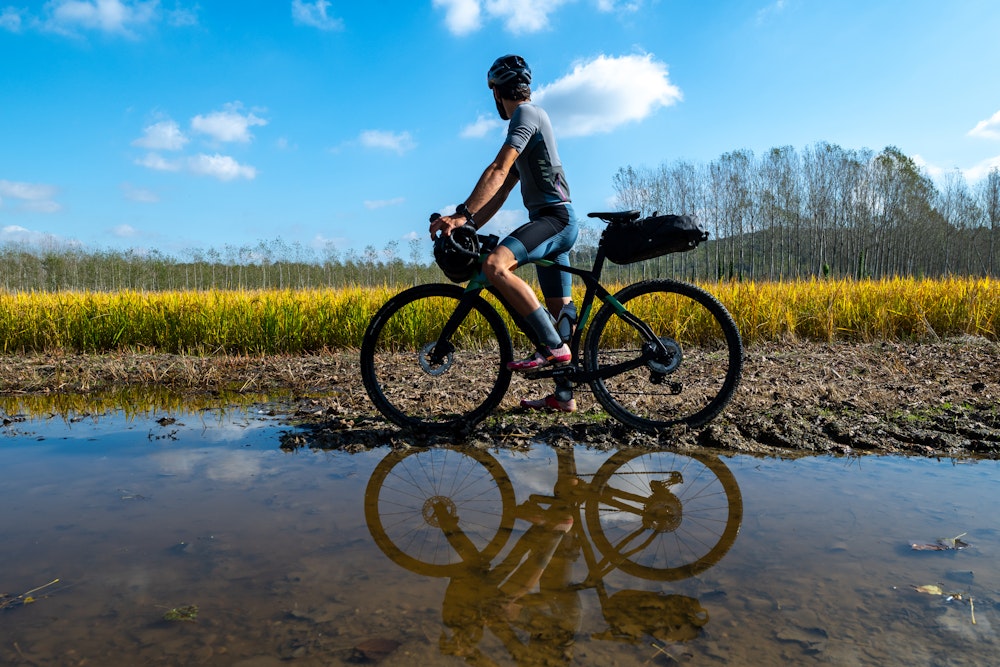
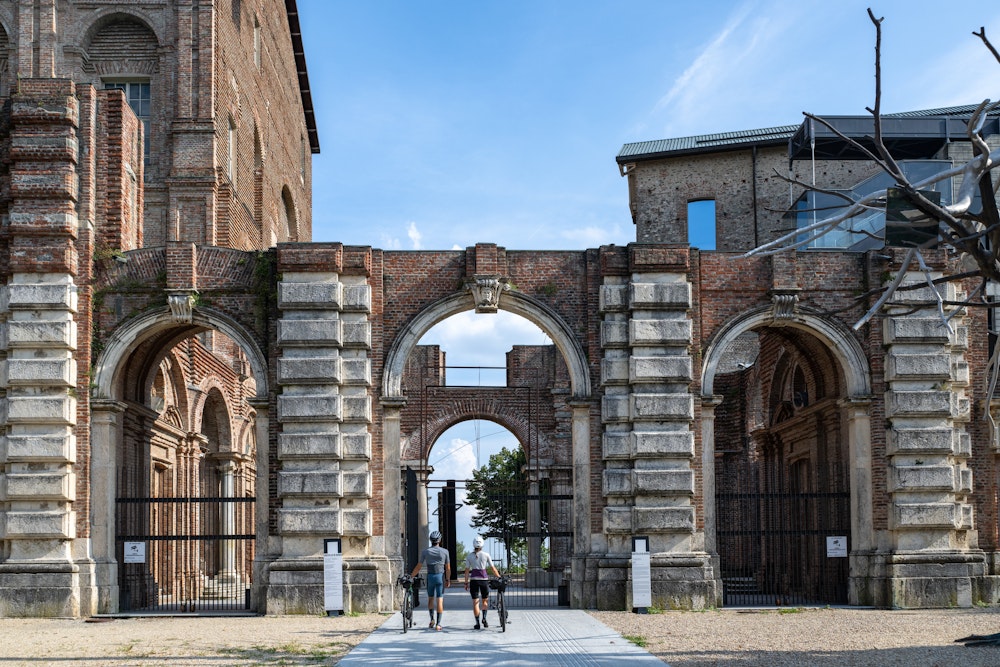
The journey is drawing to an end. We already feel reconnected with the city: from here we can sense the presence of old, new and very new communication routes: the Via Francigena, the Frejus railway, the motorway, the high-speed train construction sites that we can now understand in relation to some of the places we touched on a few days ago, between the Canale Cavour and the motorway to Milan. Here, too, we are at a great crossroads, which reminds us once again how past, present and future can coexist: in this spirit we pass Sant'Antonio di Ranverso, an amazing place of worship along the ancient communication routes, and the Castello di Rivoli, with its museum, a gallery of contemporary art that anticipates the future.
We can return quietly, following the banks of the river Dora for long stretches heading for the centre, zigzagging, as in all cities, to avoid junctions, factories and shopping centres, all the way to the Parco della Pellerina, which, even by its name, retains the memory of ancient pilgrimages. So we return to the Parco Dora that welcomes us, now in the heart of the post-industrial city always in search of new vocations, amidst history, factories and a nature that is conquering new spaces. At the end of this magnificent adventure, so many places remain in our bodies, eyes and minds as if they were words in a story: the landscape of Piedmont is our own personal songbook. A book to browse through, to read, but with much of it still to be written.
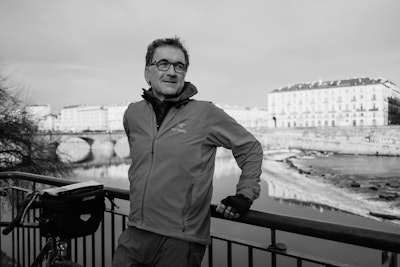
Texts
Andrea Rolando
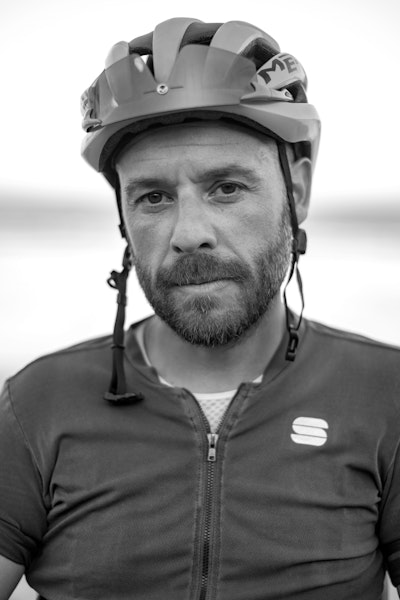
Photos
Paolo Penni Martelli
Cycled with us
Jacopo Chianale, Rebecca Fruttero
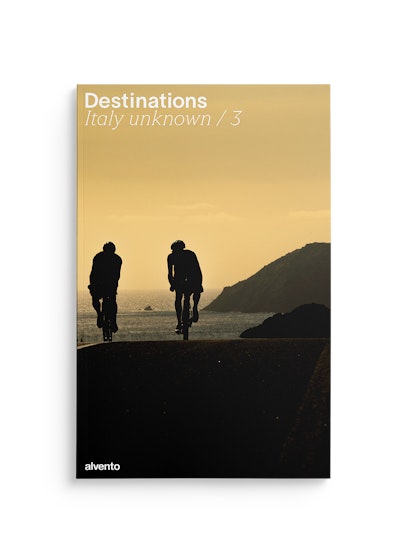
This tour can be found in the super-magazine Destinations - Italy unknown / 3, the special issue of alvento dedicated to bikepacking. 9 little-trodden destinations or reinterpretations of famous cycling destinations.
